OHIO COOPERATIVE














EXCEEDING EXPECTATIONS
ALSO INSIDE Beekeepers at the co-op Axis Sally
Easter egg tradition




22 AXIS SALLY


Mildred Gellars wanted publicity and attention — she got plenty of both, but maybe not in the way she had imagined.

24 RAIN GARDENS
The suddenly trendy landscape feature is more than just a pretty, decorative hole in the ground.


28 EASTER EGG-CITEMENT






The Rutherford B. Hayes Presidential Library and Museums continue a tradition the Ohioan brought to the White House.
Cover image on most editions: April is Lineworker Appreciation Month, when co-ops everywhere take time to say a special thanks to their crews for putting it all on the line. This page: Ever thought of being a lineworker? Ohio’s co-ops built their own training facility to bolster the skills, safety, and know-how of their workers.

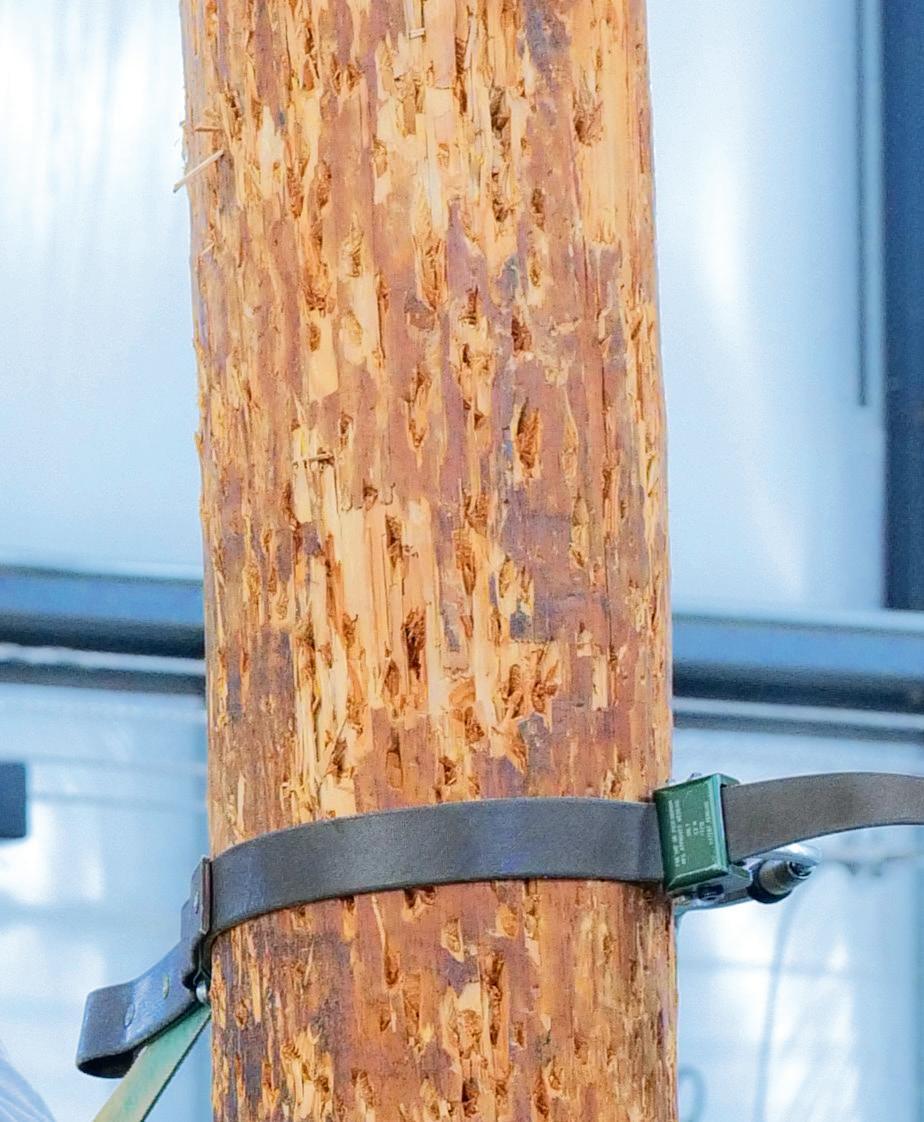

Electric cooperatives make substantial investments in the communities we serve, from the power plants that send power across the grid to your local co-op to the poles, wires, transformers, and meters that generally blend into the local landscape. These are all expensive and long-lived physical assets necessary to make your lights come on day in and day out.

But our most important investments — and our greatest assets — are the people who work for our electric co-ops. People are what make the whole thing go. Management at every electric cooperative seeks to recruit, employ, and develop people with the necessary attitude and skills to serve your needs: engineers, accountants, member service representatives, and, of course, lineworkers.
Lineworkers have long stood as the human symbols of electric service, representing the strength, skill, and determination needed to build and maintain the electric lines that keep us connected, through whatever conditions Mother Nature sends our way.













Ohio’s electric cooperatives have invested in our own lineworker training and apprenticeship program to ensure the people keeping your lights on get the best training possible to safely and efficiently work through the challenging conditions they are faced with every day. You can learn more about the path to becoming a lineworker, the training it takes, and the essential role they play on page 4 , as we celebrate lineworkers this month.
I also want to thank and recognize the hundreds of other cooperative employees who help make our organizations run — keeping your electricity service safe, reliable, affordable, and environmentally responsible. The essential service provided by cooperative employees throughout Ohio and across the country sometimes goes unnoticed, but it is always appreciated. Thank you.
Pat O’Loughlin PRESIDENT & CEO OHIO’S ELECTRIC COOPERATIVES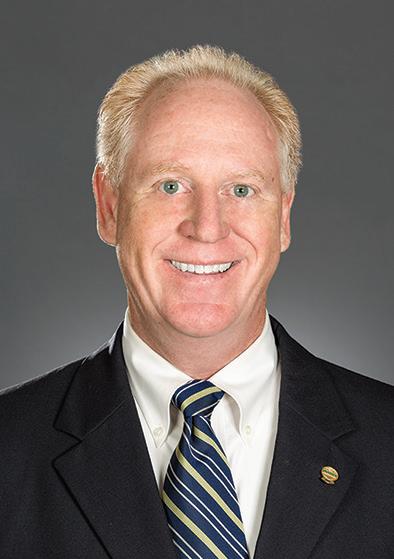




Lineworkers have long stood as the human symbols of electric service, representing the strength, skill, and determination needed to build the electric lines that keep us connected.
6677 Busch Blvd. Columbus, OH 43229 614-846-5757
www.ohiocoopliving.com

Patrick O’Loughlin President & CEO
Caryn Whitney Director of Communications
Jeff McCallister Managing Editor
Amy Howat Associate Editor
Crystal Pomeroy Graphic Designer
Contributors: Colleen Romick Clark, Randy Edwards, Victoria Ellwood, Getty Images, W.H. “Chip” Gross, Catherine Murray, Craig Springer, and Damaine Vonada.
OHIO COOPERATIVE LIVING (USPS 134-760; ISSN 2572-049X) is published monthly by Ohio Rural Electric Cooperatives, Inc. It is the official communication link between the electric cooperatives in Ohio and West Virginia and their members. Subscription cost for members ranges from $5.52 to $6.96 per year, paid from equity accruing to the member.
POSTMASTER: Send address changes to editorial and advertising offices at: 6677 Busch Boulevard, Columbus, OH 43229-1101. Periodicals postage paid at Pontiac, IL 61764, and at additional mailing offices. Nothing in this publication may be reproduced in any manner without written permission from Ohio Rural Electric Cooperatives, Inc. All rights reserved. The fact that a product is advertised in Ohio Cooperative Living should not be taken as an endorsement. If you find an advertisement misleading or a product unsatisfactory, please notify us or the Ohio Attorney General’s Office, Consumer Protection Section, 30 E. Broad St., Columbus, OH 43215. Periodicals postage paid at Columbus, OH, and at additional mailing offices.
4
4 POWER LINES
So, you want to be a lineworker? The job is tough and dangerous, but the work is rewarding and the perks are many.
8 CO-OP PEOPLE

Honey of a hobby: Co-op employees find that beekeeping is a sweet way to spend their off-work hours.


10 WOODS, WATERS, AND WILDLIFE
King of the castle: Searching for burrowing crayfish is a rite of spring, says our outdoors editor, Chip Gross.


13 GOOD EATS
Jammin’ jelly: Of course, there’s nothing wrong with good old strawberry preserves, but thick, luscious jam can be oh-so-much more!

17 LOCAL PAGES
News and information from your electric cooperative.
33 CALENDAR
National/regional advertising inquiries, contact Cheryl Solomon
American MainStreet Publications
847-749-4875 | cheryl@amp.coop
Cooperative members: Please report changes of address to your electric cooperative. Ohio Cooperative Living staff cannot process address changes.
Alliance for Audited Media Member
8




10
13
What’s happening: April/May events and other things to do around Ohio.

36 MEMBER INTERACTIVE
Tea party: Members' children (and some grown-ups) gather around the table for a steaming cuppa — as in the photo at right by Lorain-Medina Rural Electric Cooperative member Tonia Edmonds of her daughter and friends.

33
36
Visit Ohio Cooperative Living magazine online at www.ohiocoopliving.com! Read past issues and watch videos about our articles or our recipes. Our site features an expanded Member Interactive area, where you can share your stories, recipes, and photos and find content submitted by other co-op members across the state.


 BY RANDY EDWARDS
BY RANDY EDWARDS
Travis Wise has been an apprentice lineworker for only about a year, but already he’s experienced the kind of extreme weather that is both the scourge of the lineworker and a source of collective pride.


In June 2022, a derecho packing a macroburst, three tornadoes, and powerful straight-line winds left thousands without power in the midst of a heat wave. Six months later, the winter storm that hit Ohio just before Christmas brought snow and sub-zero temperatures with wind-chill readings in the minus-30 range, along with another round of power outages.

Despite the inhospitable weather conditions, Wise spent long days outdoors with his team of lineworkers at Consolidated Cooperative, returning power to customers who desperately needed it.
“In June, we were working 16 hours a day in 90-degree weather, for about a week,” says Wise, 22. “Then winter storm Elliott hit (in December) and we worked a lot of overtime when it was minus 30. We’ve seen the hottest of the hot and the coldest of the cold.”

“Sure, I want to be home,” Wise says. “But there are people out there who don’t have power and if we’re not out there doing this, then who is?”
That sense of mission, along with a strong work ethic and a focused mind, is what Ohio’s electric cooperatives look for when hiring apprentice lineworkers, says Kyle Hoffman, manager of the Central Ohio Lineworker Training (COLT) facility in Mount Gilead.

“It takes a certain mindset to want to go into this line of work — a very focused individual who loves to be outside, who loves to work with their hands,” says Hoffman. “Because when most people are seeking shelter from the storms, you’re going out into it.”
After they are hired by one of the 25 electric co-ops in Ohio and West Virginia, apprentice lineworkers begin rigorous training at COLT, learning the fundamentals of electricity; how to install, maintain,
The job is tough and dangerous, but the work is rewarding and the perks are many.
and repair power lines; and how to operate a variety of vehicles used in line work.
But first and foremost, they learn safety.
“It is a hazardous occupation,” Hoffman says. Most power lines in Ohio carry 7,200 volts of electricity. “The hazards of the occupation are what require the highest level of training. It takes a highly knowledgeable and highly skilled individual to do this kind of work.”
The knowledge and skill are earned over a four-year apprenticeship, including 8,000 hours of on-the-job training interspersed with 600 hours of instruction at COLT. The pride of COLT is the indoor training facility, completed in 2017. Its ceiling is high enough to accommodate 40-foot utility poles, which students learn to climb wearing pole climber boots with gaffs — metal spikes that penetrate the wood.
On the walls are banks of electric meters and rows of gear: climbing belts and safety harnesses, rubber gloves and sleeves, flame-retardant clothing, and an assortment of hand tools.
The 16-acre outdoor training area is similarly equipped with multiple poles rigged with power lines that are energized at a voltage lower than that of live distribution lines, to better manage the safety of the students while they learn. “If they make a mistake here, they’re going to walk away from it,” Hoffman explains.
About 150 apprentice lineworkers are engaged in training in any one year, along with 35 to 40 journeyman (fully trained and qualified) lineworkers who come for continuing education. After the four-year apprenticeship, a lineworker is fully qualified and also has earned a commercial driver’s license and 45 college credit hours.
For many of the students, this is not their first trip up a pole. Wise, for example, spent six months in lineworker training at a trade school near his childhood home of Knockemstiff, in Ross County. For Paul Pfenning, 31, a job with Midwest Electric in his hometown of St. Marys, in
Auglaize County, came after eight years of military service, in the Air Force and Air National Guard, before attending a lineworker training program in Georgia.
Military service is excellent preparation for a lineworker, Pfenning says. “It’s a tough job, but that’s probably why I’m interested in it. In my military career, I’m used to structure, attention to detail, a strong work ethic,” he says. “As a lineman, attention to detail keeps you safe and gets you home at night.”
“When they heard I was going to go to do the lineman training, people said, ‘Do you really want to stand out in the cold and the blistering sun?’ To be honest, that stuff never bothered me,” Pfenning says. “I’ve been an outdoors guy all my life, and in the military, the mission never stopped just because it was raining.”
Like the job, the training is challenging work and doesn’t happen overnight, but Wise says he’s undaunted by the process.
“A lineman told me one time, ‘You know, you’re going to be an apprentice for such a short time, and you’re going to be a lineman for 40 years. You’re going to get your time in the bucket.’ So, I’m not in any rush to speed through it."
Lineworkers at Ohio’s Electric Cooperatives earn top salaries and benefits, and they’re in demand. Hoffman explains that demand for lineworkers is expected to continue growing in the coming years due to retirements and an increasing focus on improving the reliability of the electricity grid.
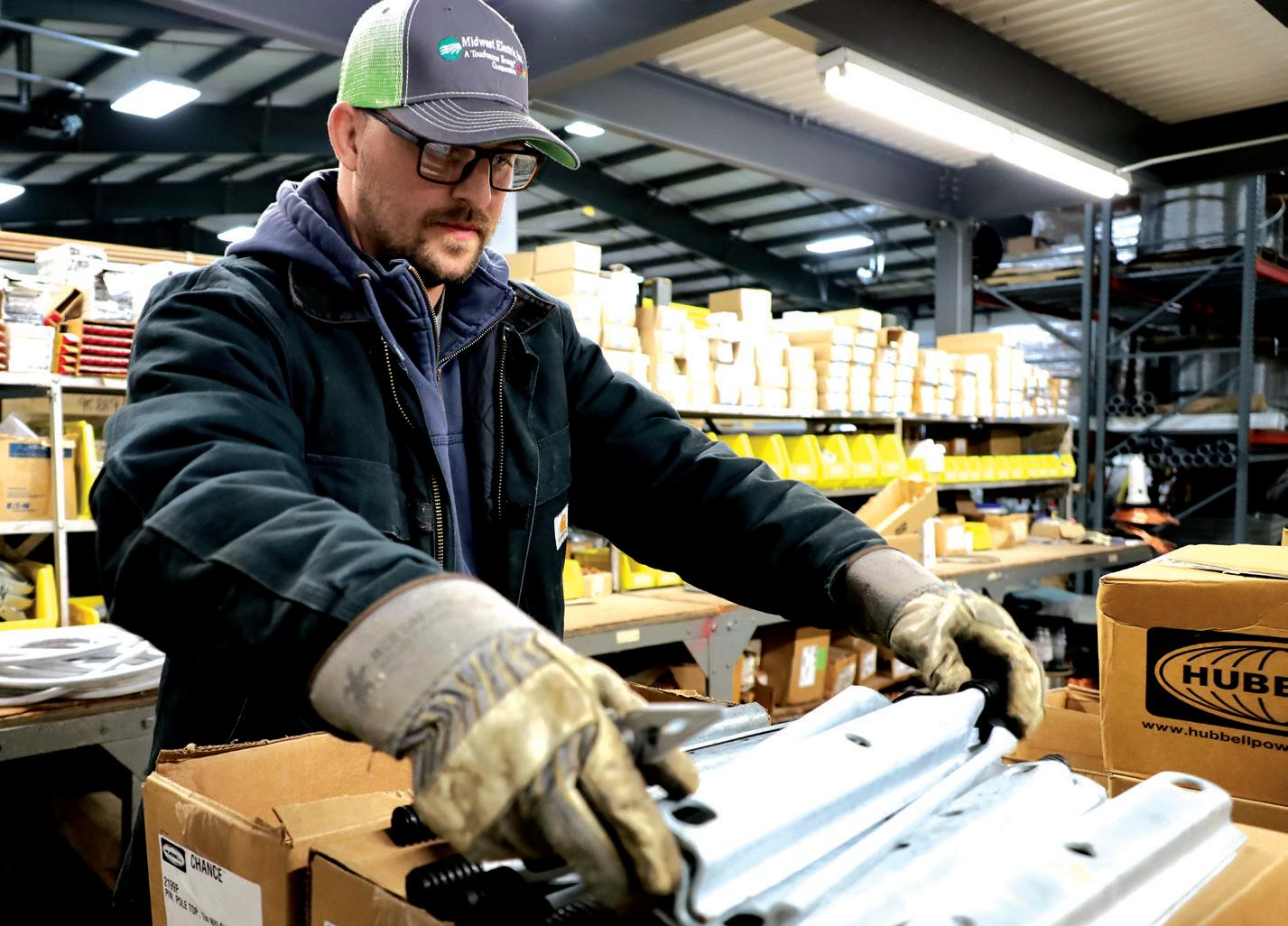
And some of the benefits are intangible, yet rewarding.
“When the lights go back on and you get that applause in the middle of the night, and people come out and say, ‘Thank you.’ You’re doing something more than just going to work each day,” Hoffman says. “That’s really what line work in the co-ops is all about.”
















Geothermal heat pumps circulate water underground to provide the ultimate in energy-efficient heating and air conditioning. Radiant systems circulate water throughout your floors to provide the ultimate in luxurious comfort. WaterFurnace’s new HydroLogic radiant panel married to our 5 Series OptiHeat unit is simply the easiest way to combine the two worlds. You’ll love your warm, toasty floors—and you’ll adore your utility bill. Contact your local WaterFurnace dealer today to learn more.

code WWCJ519 to get items 26-12849-0402 / 26-426880402 / 26-50851-0402 for $12.99 or 2 for $10.99 each and get free shipping on your order. Free shipping applies to standard shipping only, not including any additional shipping surcharges. Shipping upgrades additional. Does not apply to clearance. Discount is priced as marked in checkout. Not applicable to gift cards or prior purchases. May not be redeemed for cash or combined with other offers. Returns credited at discounted price. Only applies to in-stock merchandise. Expires 5/27/2023. Order by mail: Woman












500 S. Mesa Hills Drive, El Paso, TX 79912

























































































 By Victoria Ellwood
By Victoria Ellwood








Encountering thousands of bees could be a little disconcerting — maybe downright terrifying — for most of us. But two Ohio electric cooperative employees share their backyards with hundreds of thousands of bees, and they say coexisting with the buzzing critters is intriguing, relaxing, and oh-so-sweet.


“In the summertime, my boyfriend and I will walk down by the hives and see what the bees are doing. It’s really interesting to watch them. They’re gentle, they fly in and out, and they leave you alone,” says Missy Davis, staff accountant at Holmes-Wayne Electric Cooperative in Millersburg, who has six hives on her rural property near Wooster.

Likewise, Stacey Shaw, safety director and line supervisor at HWEC, has at least 10 beehives on his property near Millersburg, with up to 100,000 bees in each one.







































“Sometimes, I lie down on the ground and just watch them,” he says. “Each hive has its own personality. Some are really docile, and then you have some that can be more aggressive. But the term ‘worker bee’? They earn that. As soon as daylight comes, they head out strictly for work; they work nonstop until dark and then do it all over again the next morning.”

Co-op employees find beekeeping is a sweet way to spend their off-work hours.













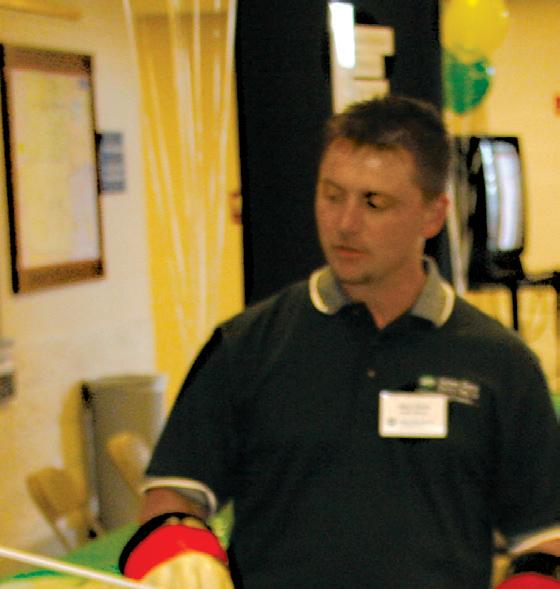
Adds Missy: “It’s kind of mind-blowing the vast number of bees that can be in one hive and the amount of work they do. And it’s crazy how much honey they make. They’re really cool creatures.”




































































Both Missy and Stacey got involved in beekeeping as a hobby, and quickly became infatuated with their tiny livestock.






“I was looking for something to do when I retire, and I figured bees are something we need for our food supply,” explains Stacey. “After reading about them for 10 years, I decided to do it a couple of winters ago.”
Though it’s simply a hobby, his family has gotten the buzz, too. “Our house has a lot of bee things in it — ‘bee’ this and ‘bee’ that. My daughter even hosted a ‘bride to bee’ wedding shower.”

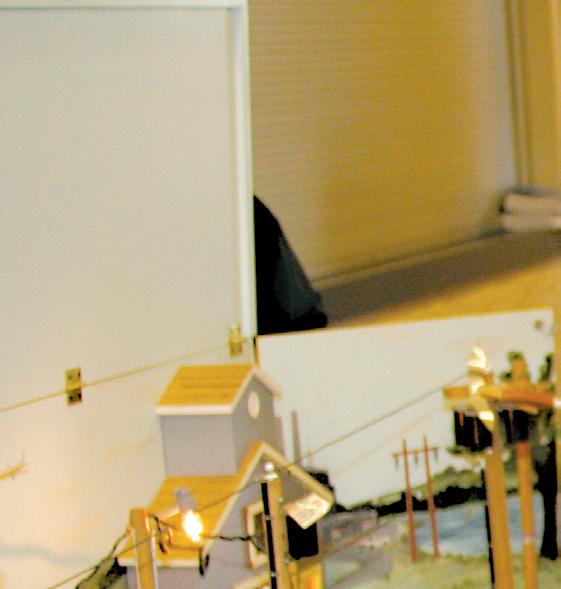





Missy, who created a “Missy’s Honey” logo for her hobby, experiments with making beeswax lip balms and hand scrubs, but mostly just harvests the honey. “Depending on how good the nectar flow is in the summer, you can end up getting 6 to 8 gallons of honey from each hive,” she explains. “The alfalfa fields and white clover that grow around my home make the honey super sweet.”
She suits up in her protective gear to interact with her bees, after finding out the hard way she’s allergic to bee stings. “I learned real quick that they can get you,” she says. “Now I keep an EpiPen handy. But the more you work with them, the more they recognize you. They’re really pretty gentle.”




























 STORY AND PHOTOS BY W. H. “CHIP” GROSS
STORY AND PHOTOS BY W. H. “CHIP” GROSS












Sometime when you feel like getting outdoors and impressing your young kids/grandkids this spring, tell them this story: Say you’re going to visit a king who lives in a castle. Would they like to come along and meet him? To add to the mystery, tell them the king only comes out of his castle at night. What youngster is going to say no to that?
Take along a shovel, a bucket, and a pair of gloves. What you’ll be digging for are burrowing crayfish, which build a mud chimney — or “castle” — several inches high, giving away their location. This is the ideal season of the year to look for the chimneys of burrowing crayfish, before vegetation emerges and makes them more difficult to see. The edges of moist farm fields and wet areas are good places to begin your search.

Known variously as crayfish, crawfish, crawdads, mudbugs, or by many other local names, these crustaceans look like mini freshwater lobsters — and taste like it, too. Crawfish boils in the South (especially in Louisiana, where the clawed critters routinely grow much larger than here in Ohio) are highly anticipated party gatherings.
Worldwide, crayfish have a tremendous diversity; there are nearly 700 species, with 475 of those found in North America. The majority of the North American species are in the eastern half of the continent and associated with the Appalachian and Ozark mountains.
“In Ohio, we live in the center of the world’s crayfish diversity, with new species still being discovered and described,” says Roger Thoma, who’s been studying crayfish, a field of science known as astacology, for more than half a century. “The Buckeye State currently has 22 native and two introduced species of crayfish.”
Thoma has recently put that accumulated knowledge into his new book, A Naturalist’s Guide to the Crayfish of Ohio, published by the Ohio Biological Survey. According to Thoma, there are three general categories of Ohio crayfish: stream dwellers, rock dwellers and bank burrowers, and primary burrowers. It’s the last category, primary burrowers, that construct chimneys, and there are six of those species in Ohio.

“The burrows of these species can sometimes be quite deep, up to 6 feet, but 2 to 3 feet is more the norm,” Thoma says.
“The simplest of the burrows are vertical, with only one entrance and no side tunnels. Some species construct complex tunnels with multiple entrances, side tunnels, and enlarged chambers the size of a football.”
As for size, most primary burrowers max out at about 5 to 6 inches in length. But the threatened crawzilla crawdad — yes, that’s its actual common name — can measure up to 8 inches.
“That name originated with early Ohio crayfish researcher Ray Jezerinac,” Thoma says. “He collected a specimen from the wild that was so large he kept
students to observe. He named the specimen 'crawzilla.' It’s also the largest burrowing species I have collected, a very robust crayfish.”
The only crayfish that’s larger in Ohio is the non-native red swamp crayfish. Having unintentionally become established in the Sandusky Bay area of Lake Erie, the species is expanding its range and can measure a full foot in length.
One note: Make sure to get permission from the landowner before digging on private property, and always replace whatever soil you might dig up in your search for burrowing crayfish.



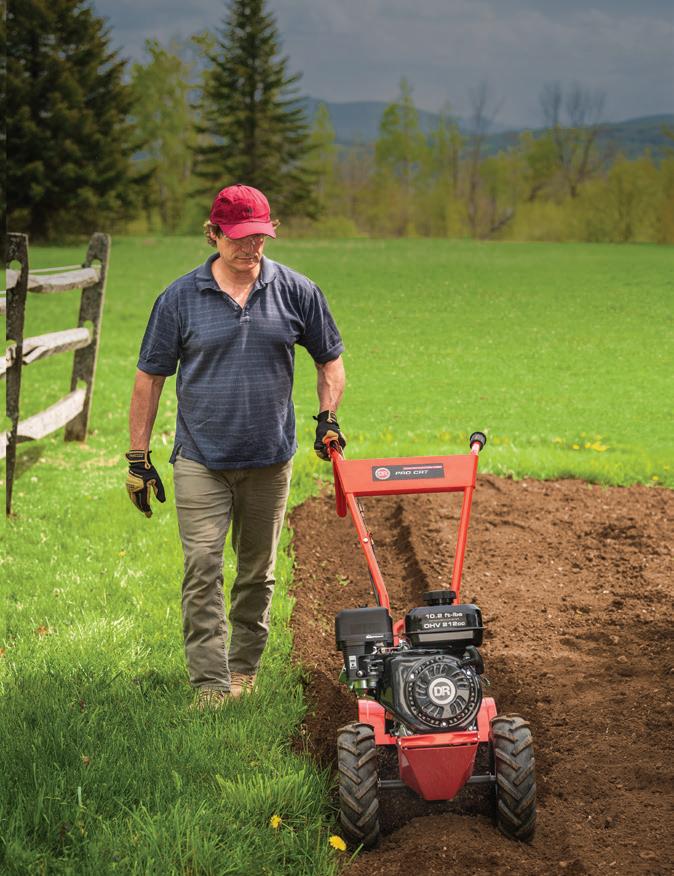






































RECIPES AND PHOTOGRAPHS
BY CATHERINE MURRAY
Prep: 20 minutes | Bake: 10 minutes | Servings: about 7
¼ cup packed light brown sugar
¼ cup shortening


























































































































































































































































































































































































































































































































































































































































































































































































































































¼ cup unsalted butter, softened
1 egg, separated
½ teaspoon vanilla
1 cup flour

¼ teaspoon salt








6 ounces jam or jelly of your choice
Mix brown sugar, shortening, butter, egg yolk (reserving white), and vanilla with an electric mixer until fluffy and well incorporated. Mix in flour and salt until dough just holds together. Dip fingers in egg white and shape dough into 1-inch balls; place on an ungreased baking sheet. Press thumb down in the center of each, leaving an indentation for jelly or jam.
Preheat oven to 350 F. Bake 10 minutes or until a light golden brown. Transfer cookies to wire rack to cool. Using a small spoon, fill thumbprint craters with jam (apricot jam shown). If you prefer your cookies to be extra neat and tidy, heat jam in the microwave for 10 to 20 seconds to loosen it a little — it will cleanly fill the thumbprint. Store in an airtight container for up to 3 days. Makes 15 cookies.
Per serving: 275 calories, 15 grams fat (6.5 grams saturated fat), 41 milligrams cholesterol, 102 milligrams sodium, 35 grams total carbohydrates, 0.5 gram fiber, 3 grams protein.
Ofcourse,there’snothing wrongwithgoodoldstrawberry preserves,butthick,lusciousjam canbe oh-so-muchmore!

NOTE: Onion jam pairs well with pork, chicken, and lamb, or add to a charcuterie board, pizza, crostini, or grilled cheese.
Prep: 5 minutes | Cook: 35 minutes | Servings: 12
¼ cup olive oil
3 pounds sweet onions, diced small
2 sprigs fresh thyme 1 sprig fresh rosemary
¾ cup granulated sugar
½ cup balsamic vinegar







salt to taste
In a large, heavy-bottomed pot, heat olive oil over medium-high. Add onions and cook, stirring often until golden brown, about 15 minutes. Reduce heat to low and add herb sprigs. Cook another 3 minutes, stirring often.
Evenly sprinkle sugar over the onions and cook without stirring until the sugar melts, about 5 minutes (if sugar is disturbed by stirring or shaking, it will seize into clumps and require more time to melt). Increase heat to medium-high and cook untouched until it becomes an amber-colored caramel, about 6 minutes — watch closely and reduce heat if caramel begins to burn.
Stir in the vinegar and cook another 5 minutes or so. It’s fully thickened when a spoon across the bottom of the pan separates the jam for several seconds. Discard herb sprigs and season with salt to taste. Cool, then transfer to a sealed container. Store in fridge for a week or freezer for 3 months. Serve warm or at room temperature.
Per serving: 130 calories, 4 grams fat (0.5 gram saturated fat), 0 milligrams cholesterol, 28 milligrams sodium, 23 grams total carbohydrates, 2.5 grams fiber, 1 gram protein.
Have you tried one of our recipes? Do you have a recipe to share with other Ohio co-op members? Visit the Member Interactive page on www.ohiocoopliving.com to find recipes submitted by our readers and to upload yours.
www.ohiocoopliving.com

While you’re there, check out a video of a few of our recipes being prepared.


Prep: 10 minutes | Bake: 25 minutes | Servings: 4
1/3 cup red pepper jelly
1½ tablespoons Dijon mustard
1½ tablespoons lemon juice
¼ teaspoon black pepper
1 pound thin boneless, skinless chicken breasts
Say you’ve been gifted some pepper jelly, or you see it on a store shelf and wonder, “What would I ever use this for?” Here’s your answer! There are many varieties of pepper jellies out there: Hot Pepper Jelly, Jalapeño Jelly, Hot Pepper Bacon Jam, and different combinations of peppers and fruit, like Pineapple Pepper Jelly. The red pepper jelly in this recipe is relatively mild, sweet, and flavorful, just like a red bell pepper. As a bonus, the glaze can be transformed into a delicious salad dressing by adding ¼ cup of olive oil and a dash of salt.
Preheat oven to 400 F. In a small bowl, whisk together all ingredients listed except chicken. Lay chicken breasts flat in a baking dish coated with cooking spray. Spoon and spread glaze evenly over each breast, then flip and coat the other side. Spoon any remaining glaze into the bottom of the dish. Bake uncovered on the middle rack for 18 to 20 minutes, or until cooked through. Serve with your choice of side dishes (asparagus and wild rice shown). Have some pepper jelly left over? Spread on a buttermilk biscuit or crackers.
Per serving: 288 calories, 9 grams fat (2 grams saturated fat), 101 milligrams cholesterol, 192 milligrams sodium, 19 grams total carbohydrates, 0 grams fiber, 33 grams protein.
Note: Bringing the ingredients up to room temperature ensures a smooth cheesecake. Prep: 20 minutes | Bake: 70 minutes | Chill: 6 hours | Servings: 12

6+ tablespoons unsalted butter
8 ounces graham cracker crumbs (about 2 cups)
3 8-ounce packages cream cheese, at room temperature
1 cup sugar
1 cup sour cream
3 large eggs, at room temperature
2 teaspoons vanilla extract
¾ cup raspberry jam
1 tablespoon lemon juice
Combine butter and crumbs, then press into a buttered springform pan. Using an electric mixer with paddle attachment, beat cream cheese and sugar on medium-low for 2 minutes, scraping the bowl a few times. Beat in sour cream, then eggs one at a time, then vanilla, beating well after each addition. Pour half the batter over the graham cracker crust. In a small bowl, combine jam with lemon juice. Evenly space 5 small spoonfuls of jam mixture onto the batter. Using a skewer, ice pick, or thin knife, start in the middle of each dollop of jam and pull out toward the cheesecake batter, continuing to return to the middle and pull outward to create a curved star-like pattern. If there are still large patches of white cheesecake, add small dots of jam and create the same pattern by starting in the middle and pulling outward toward the cheesecake batter. Pour remaining cheesecake batter over the jam, lightly smooth out the top, then follow the same instructions, placing spoonfuls of jam mixture and creating the same star-like pattern.
Preheat oven to 350 F. Place a roasting pan with hot water on the bottom rack. Bake cheesecake for 60 minutes on middle rack before opening the oven door, then check doneness — it’s ready when the edges stay firm and slightly puffed and the center is a little wobbly when jostling the pan. Continue baking in 5- to 10-minute increments until done. Set pan on a wire rack to cool completely (about an hour), then wrap the whole pan in plastic wrap and chill for 5+ hours. Remove from fridge 30 minutes before serving. Pull off pan sides and bottom and place cheesecake on serving platter. Cut slices with a thin, non-serrated knife, or try thick fishing line pulled taut. Wrap and refrigerate for up to 5 days or freeze for up to 3 months and thaw in the fridge when ready to eat.
Per serving: 502 calories, 32 grams fat (19 grams saturated fat), 132 milligrams cholesterol, 313 milligrams sodium, 47 grams total carbohydrates, 0.5 gram fiber, 8 grams protein.



Like millions of older Americans, I struggle with mobility. For years, I watched my quality of life slip away, as I was forced to stay home while friends and family took part in activities I’d once enjoyed. I thought I’d made some progress when I got a mobility scooter, but then I realized how hard it was to transport. Taking it apart and putting it back together was like doing a jigsaw puzzle. Once I had it disassembled, I had to try to put all of the pieces in the trunk of a car, go to wherever I was going, and repeat the process in reverse. Travel scooters were easier to transport, but they were uncomfortable and scary to drive, I always felt like I was ready to tip over. Then I found the So LiteTM Scooter. Now there’s nothing that can hold me back.
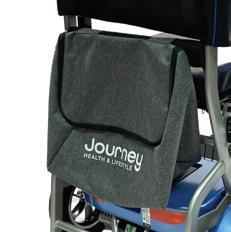
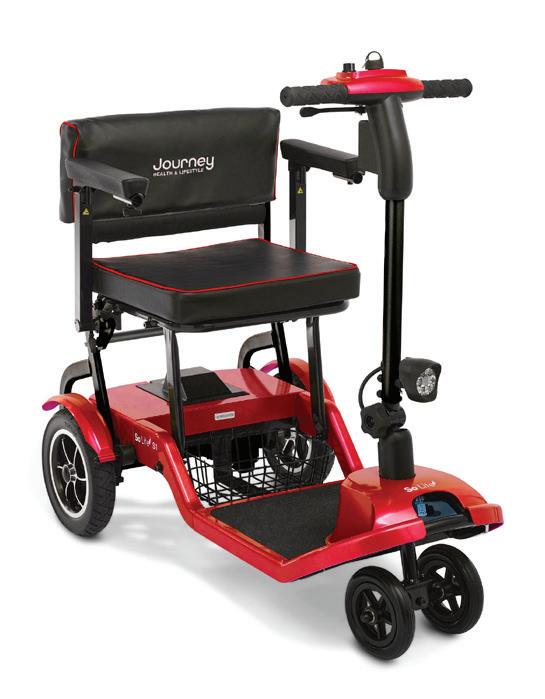



•
•






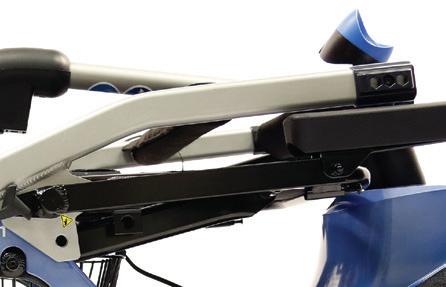
Years of work by innovative engineers have resulted in a scooter that’s designed with seniors in mind. They created Electronic Stability Control (ESC) that makes it virtually impossible to tip over. If you try to turn too quickly, the scooter automatically slows down to prevent it from tipping over. The battery provides powerful energy at a fraction of the weight of most batteries. With its rugged yet lightweight aluminum frame, the So LiteTM Scooter is the most portable scooter ever—but it can hold up to 275 pounds—yet weighs only 40.8 pounds without the battery! What’s more, it easily folds up for storage in a car seat, trunk or even on an airplane. It folds in seconds without tools and is safe and reliable. Best of all, it’s designed with your safety in mind, from the newest technology and superior craftsmanship. Why spend another day letting your lack of mobility ruin your quality of life? Call now and find out how you can get a So LiteTM Scooter of your very own.

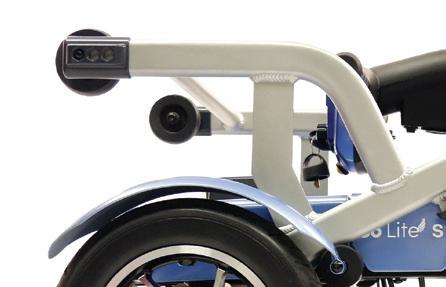

When someone is about to do something that may limit their options later, you might advise that person, “Don’t put all your eggs in one basket.” This strategy is how I would describe URE’s commonsense approach to the current energy transition.
Many consumers — both individuals and companies — are interested in using renewable energy, citing strong interest in the environment and the availability of government incentives. We’ve seen this trend locally, as consumers increasingly take advantage of rooftop solar power and developers install utility-scale solar farms in our area.
Innovations in renewable energy technologies have led to decreases in costs, making renewables more feasible, accessible, and scalable. Over the past few years, our generation provider, Buckeye Power, has adjusted our fuel mix by utilizing more renewables. They have installed solar arrays at 24 sites throughout Ohio as part of the OurSolar community solar project. In addition, they provide us electricity from anaerobic digesters at livestock farms, methane-produced power from landfills, and hydropower transmitted from upstate New York.
Nationally, we’re seeing increasing reliance on renewable energy sources at the same time fossil fuel plants are being taken offline, often before the end of their useful life. Meanwhile, we’re seeing more pressure on the electric grid caused by more frequent and intense severe weather events and rising electricity demand. This was evident during the winter storm and subsequent power emergency in Texas in February of 2021, and more recently when transmission grid balancing officials at PJM called for conservation to avoid rolling blackouts in our own area this past Christmas holiday, when temperatures plummeted.
So how do we reconcile the competing challenges of increasing electric grid stress and the need to reduce carbon output? Renewable sources like solar and wind energy are certainly beneficial for the environment, but they are intermittent resources because the sun does not always shine and the wind does not always blow. Our primary job is to provide electricity 24/7 to you and
our community — especially during the hottest and coldest days. To do this, we also need access to plenty of consistent sources of power that will meet all needs of all our existing and newly electrified technology. For our part, through Buckeye Power, we have access to that power, but Buckeye is still a small part of a much larger electric grid.
Anthony Smith CEO/PRESIDENT
At URE, we are passionate about providing our members with safe, reliable, and affordable energy. But no matter how well we take care of our local lines and substations, we still depend on robust transmission and generation sources to serve you.
So where does that leave us? Well, let’s not put all our eggs in one basket. There is great value in maintaining a diverse mix of fuel sources — both fossil fuels and renewables — to meet the growing demand for electricity while at the same time reducing our nation’s overall carbon footprint.
Providing reliable electricity when it is needed most is an increasing challenge as pressures mount to transition to more renewable generation. Lowering the overall carbon footprint in this country means we’re going to electrify more and more of our economy. Solar and wind power are an important part of a broader energy portfolio, but they are not available 24/7. In today’s ever-connected world, our communities need power around the clock.
If this all makes sense, you might be wondering what you can do to help. One of the most effective ways to ensure we have reliable energy sources over the long term is to make your voice heard by our lawmakers and policymakers. Consider joining the America’s Electric Cooperatives Political Action Committee (PAC). You can find more info on page 18. When legislators hear directly from large groups of their constituents, they tend to pay attention. So, take action!
URE members: For just $2.08/month, you can defend your way of life through America's Electric Cooperatives PAC.
The PAC is a bipartisan political action committee that:
Focuses on issues that affect electric co-ops like URE.
Supports legislators who advocate for electric co-ops.
Is backed by 36,000 U.S. electric co-op members.
Consider reinvesting a portion of your member credits in America's Electric Cooperatives PAC. To learn more, visit ure.com. Co-op members can also sign up to participate by sending the completed form below to: America's Electric Cooperatives PAC, URE, 15461 US Highway 36 Marysville, OH 43040

I want to help keep the voice of rural electric cooperatives heard in the political process by participating in America's Electric Cooperatives PAC.
REGULAR: $2.08 PER MONTH ($25/YEAR)
CENTURY CLUB: $8.33 PER MONTH ($100/YEAR)
PRESIDENT’S CLUB: $41.66 PER MONTH ($500/YEAR)
OTHER $ ____________________
I a rm that my contribution has been made with non-corporate funds

NAME:
CITY: STATE: ZIP:
EMAIL:
ADDRESS:
COOPERATIVE:
SIGNATURE:
*Federal Election Law requires the following information for contributions exceeding $200:
EMPLOYER:
OCCUPATION:
Contributions to the America's Electric Cooperatives PAC are not tax deductible for federal income tax purposes. Contributions to the PAC are voluntary and will be used for political purposes. You have the right to refuse to contribute without reprisal. Federal law prohibits contributions from foreign nationals who lack permanent resident status. Any contribution guidelines presented are merely suggestions. You are free to contribute more or less than the suggested amounts, or not at all. NRECA will not favor or disadvantage anyone by reason of the amount contributed or a decision not to contribute.



URE is thrilled to announce our winner for the 2023 Washington, D.C., Youth Tour. Applicants submitted their academic resume, references, and an essay on why they would like to attend YT 2023.


Grace is the daughter of Jennifer and Adam Zahn and a sophomore at Fairbanks High School. Grace shared she wanted to learn more about the historical and cultural upbringing of the nation and gain an understanding and appreciation of our country and heritage. Her personal recommendations exemplified her commitment to her community, her outstanding life skills, her teamwork with her peers, and her community service.
Grace will travel to Washington, D.C., for an all-expensespaid trip this summer. The weeklong trip will allow students to learn about leadership and the cooperative model and also to explore the nation’s capital. More than 1,500 students from across America take part in the Youth Tour experience each year. The National Rural Electric Cooperative Association (NRECA) has been coordinating this program since the 1950s.

The 2023 nominating committee met on Feb. 16 to review the required qualifications and the time commitment expected of a URE trustee with URE’s attorney, Kim Cutler of Bridges, Jillisky, Streng, Weller and Gullifer, LLC. John Mangus was elected chairperson of the Nominating Committee by unanimous vote.
The committee put forward the names of candidates for the open seats in districts 3 and 6.
We would like to thank the members of this year’s nominating committee for their time and service to the cooperative and for helping us to satisfy our Code of Regulations requirement regarding the nomination of candidates for the board of trustees election.

Watch your mailbox next month for the official ballots with the candidate bios. The voting deadline is June 1. Confirmation of the board positions will be announced at the annual meeting of members on Saturday, June 3.



DISTRICT 3:
Libin Babu
Gary Baker
Mark Barnes
Donald Brown
John Brown
Sam Crunkilton
Dale Scheiderer
Lesley Verbus
DISTRICT 6:
Shay Burris
Glenna Reed
Jeff Reinhard
Don Tatman
District 1 Ron Cronley
District 2 Jan Grose
District 3 Tim White
Nathan Rausch
District 4
District 5
Harold Walters
John Mangas
District 6 Doug Dittus
District 7 Ambrose Phillips

SMARTHUB ONLINE BY MAIL

Members have the option of casting their votes via mail, online, or using the VOTE NOW button on the SmartHub app. A simple how-to guide will be included with your ballot.


As a member, you are an important part of the decision-making and policy-setting at URE. And that means you have the right to vote annually for your board of trustees. This year’s election will also have a suggested change to the Code of Regulations.
Cooperative members elect trustees each year to serve a three-year term. Members vote for trustees each year before the annual meeting, and the election results are announced at the annual meeting. The 2023 annual meeting is Saturday, June 3. Members can vote for one trustee in each district up for election. Members can vote online, on SmartHub, or by mail and will receive voting information in the mail in May.
Two board seats are up for election in 2023: District 3 (Paris Township), and District 6 (Darby Township).
URE is democratically governed by the members it serves. The strength of the cooperative lies in having a qualified and committed board of trustees. Trustees serve as elected representatives and are accountable to our members.
APRIL 2023
Apr 25: Regular April board meeting
MAY 2023
Official meeting notice in May OCL magazine
May 14: Latest ballots can be mailed to members (20 days prior to annual meeting)
May 23: Regular May board meeting
JUNE 2023
Final meeting notice in June OCL magazine
June 1: Ballots due
June 3: Annual meeting, 9 a.m. at URE office
Election results announced/swearing in of trustees
June 27: Reorganization June meeting to elect board officers

When the power goes out, most people quickly respond to take care of their homes and families, locating flashlights and, if it’s cold, extra blankets. For URE lineworkers, an outage prompts them to jump into action to serve you, our members. After their regular workday, in the evening when they’re ready to relax, or late into the night and they’re fast asleep. Even when they have family obligations or holiday gatherings. And especially when the weather is bitterly cold, or a storm is raging.
The amount of time between a lineworker being notified of an outage and the actual restoration depends on a variety of different scenarios. Most power outages will be over almost as soon as they begin, but some can last much longer — a few hours, days, or even weeks. Many outages are caused by car accidents or severe weather. Freezing rain, sleet storms, and high winds can damage power lines and equipment. Extreme cold snaps or heat waves can also overload the electric system. On average, a typical URE outage lasts 99.5 minutes. Nationally, the average is 112 minutes. When a major event occurs, that average outage time increases to 250 minutes. As your cooperative, we at URE hope that you understand that outage restoration takes time and effort, often under very difficult conditions. It’s not as easy as flipping a switch on our end.
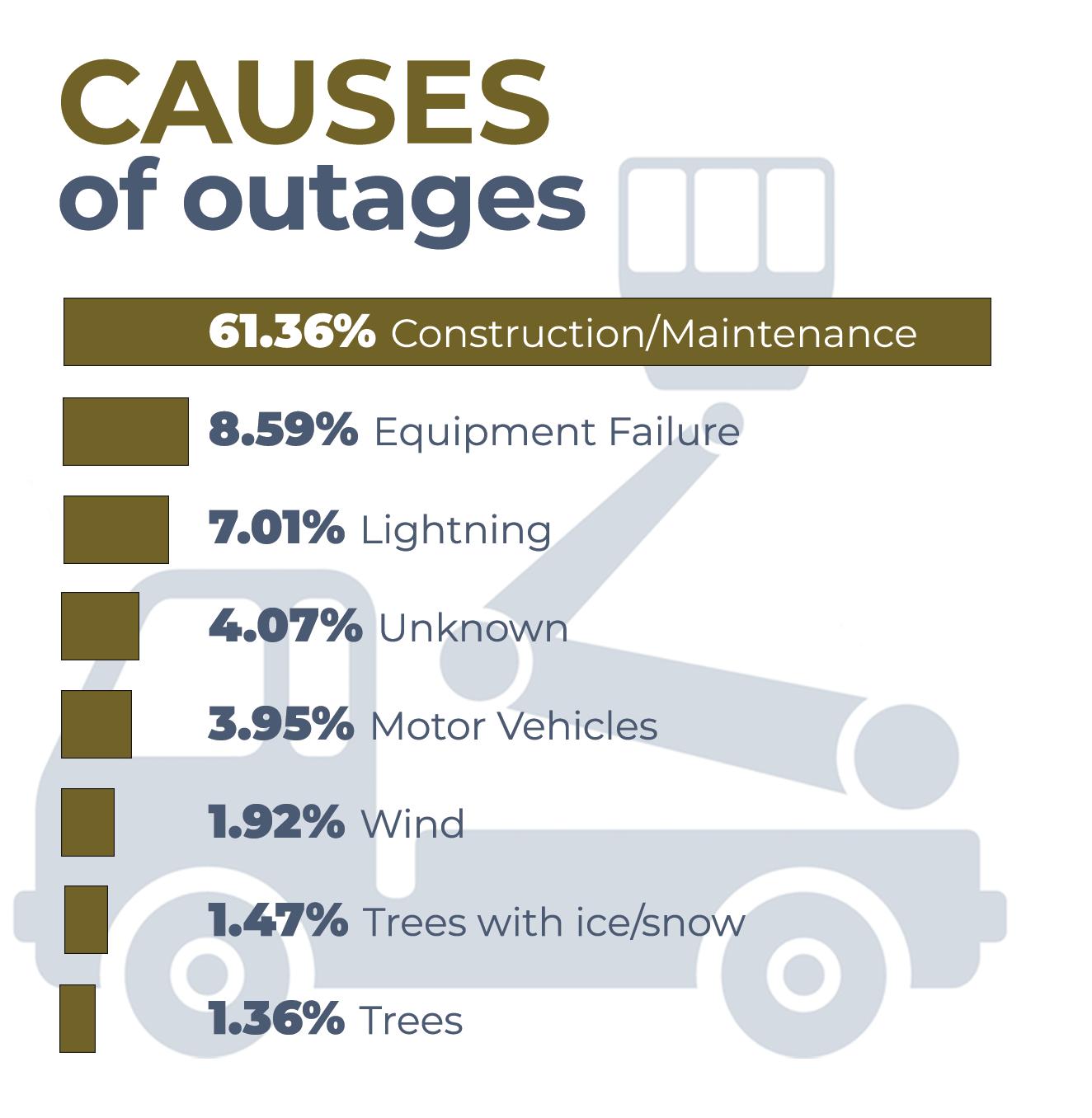

The dedication, professional expertise, and responsiveness of our lineworkers exemplify the commitment that URE has to not only meet, but to exceed, the expectations of you, our members. As a cooperative, we reflect those we serve and our guiding principles keep use grounded and focused on serving you.
Most outages are caused by factors beyond the control of your electric co-op, including severe weather and vehicle vs. pole accidents. But rest assured: Our staff is prepared and ready 24/7 to handle your needs and restore power as soon as it’s safe to do so. No matter when an outage occurs, our on-call lineworkers respond quickly, assembling their teams and assessing the situation. To begin with, they’re entering the unknown, unsure of the cause or scope of the outage. URE line crews are always analytical in their process to understand the adverse conditions involved, to restore your power as quickly as possible and, most importantly, to stay safe when working to end an outage and re-energize the lines.
Our lineworkers leave the comfort and safety of their own homes, going out at any time and often in the worst weather, to restore service to you, our members. On April 10, we will be celebrating National Lineworkers Appreciation Day. We hope you will join us in recognizing the vital contribution that lineworkers play in ensuring that your family has safe, efficient, and reliable electrical service.

•Charge your smart devices prior to the storm if you have advance warning.
•Purchase a battery-operated charger and keep it fully charged at all times.
•Create a backup written list of numbers and prepare alternative ways to communicate in case the battery in your smart device dies before power is restored.
•Leave one light on inside to tell you when service is restored.

•Avoid opening refrigerators or freezers. Food will stay frozen in a fully loaded freezer for two to three days if the door is closed. In a half-full freezer, food will keep 24 hours.
•Disconnect or turn off any appliances that will start automatically when power is restored. Why? If several appliances start at once, it may overload circuits. Hot appliances pose a fire hazard.

•Do not use generators indoors. Plug appliances directly into your generator. DO NOT plug your generator into your household’s electrical wiring.
•Cool or heat your house. In warm weather, turn your air conditioning down. In cold weather, turn your heat up. During and after the storm, keep doors and windows closed. You can hold onto temperatures for as long as 48 hours.
•During the cold months, keep a supply of dry wood if you have a safe fireplace available.
•Non-electric, unvented space heaters can be a hazard. Use them only in well-ventilated areas.
•Cook with a camp stove, fireplace or can of Sterno (cooking fuel). Never use charcoal or other fuels in unventilated areas.
•If your entire neighborhood loses power, we already know about it. But we do encourage members to also report their outages using the SmartHub app or by calling us at 937-642-1826.
•If your meter box (or the service entrance wire or mast pipe) is damaged, an electrician must repair it before we’re allowed to restore your service.

Spring and summer are opportune times for home upgrades and DIY projects. If you’re planning to make improvements to your home, consider upgrades that promote energy efficiency.
Here are a few projects that can help you save energy and money — and increase the comfort of your home.
Installing a smart thermostat is one of the simplest ways to manage home energy use and keep bills in check. Smart thermostats are easy to install and allow you to control your heating and cooling system from your phone. For as little as $100, you can purchase an ENERGY STAR-certified smart thermostat, which can save you 8% on annual heating and cooling costs, about $50 per year.
Take advantage of our Smart Thermostat Rebate and you could receive $150 or a 50% rebate of the cost of a new smart thermostat! https://ure.com/energy-efficiency/ rebate-programs-services/smart-thermostat-rebate/
Speaking of smart, devices like smart LED bulbs also offer convenient control and help boost energy savings. With smart lighting, you can set a schedule for when and how your lights turn on or off. And the next time you leave and then realize you left the lights on, all you have to do is turn them off through your phone. Smart lights come in a variety of shapes, colors, and brightness levels and you can purchase bulbs for indoor or outdoor use. Schedule outdoor smart lights to illuminate your home at night and when you’re out of town for better security.
While it’s not as trendy as incorporating smart technologies, sealing air leaks around your home is a simple, effective way to save energy and lower your bills. Applying new weatherstripping around doors and windows can instantly make your home more comfortable and reduce energy waste. Applying caulk to fill gaps around windows, doors, bathtubs, and sinks can also improve the seal of your home.
If your home feels too warm during summer (and too chilly during winter), even after you’ve sealed with weatherstripping and caulk, you may need additional insulation. Insulation may be a more expensive efficiency upgrade, but additional insulation can significantly reduce energy use and costs. The cost of new insulation depends on a variety of factors like materials, size of the home, and whether you use a contractor. Typically, the project costs can be recouped in a few years and your home will immediately feel more comfortable.
You can substantially reduce energy use through additional efficiency upgrades, like replacing old appliances with ENERGY STAR models or replacing old, leaky windows with energy-efficient windows.
If you’re not sure where to start, your best bet is to do some research. Our website — ure.com — has a lot of valuable energy efficiency information, including rebates, energy saving tips, calculators, and energy documents. Check out https://ure.com/energy-efficiency/
You can also conduct an online home energy adventure at https://adventure.touchstoneenergy.com/
An energy audit can easily identify areas to boost efficiency, and then you can determine the projects you want to tackle first based on your budget and needs.



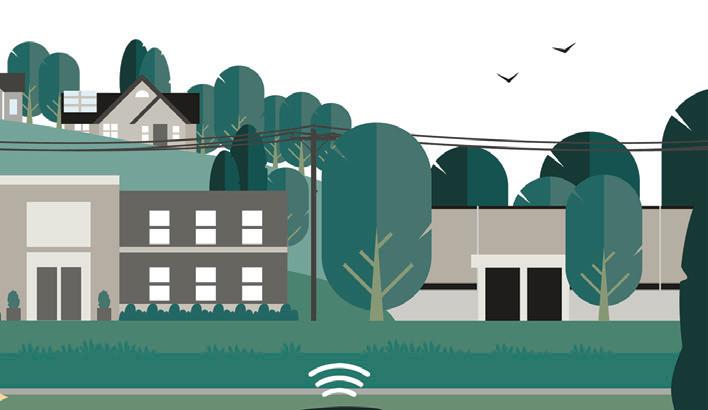


Did you know the time of day you use energy can impact electricity rates? Think of times of high energy demand like rush hour traffic. These are times when a lot of people in our community are using electricity — whether getting ready for work, which involves showering and making breakfast, or coming home in the evening to cook dinner, wash clothes, bathe the kids, or wash dishes. During these times of high energy use, your electric cooperative strives to ensure there is enough electricity available to meet the needs of all members. This often results in buying energy at higher costs (because of higher overall demand) as well as ensuring that grid infrastructure can deliver enough electricity when use is highest. This is especially true when extreme winter or summer weather pushes energy use even higher. There are several ways members can help lower energy demand by thoughtfully timing energy-intensive activities at home:
• Adjust the thermostat. Move the temperature up to 78 degrees in summer and down to 68 degrees in winter. Bump it further up or down when you’re away from home for extended periods of time.


• Postpone the use of major appliances. Move laundry loads to later in the evening or weekends. Delay running the dishwasher until well after dinner or use the delay cycle function if your dishwasher has one.
• Your water heater uses a significant amount of energy. You can reduce its energy burden by moving showering and bathing to an off-peak time or lowering the temperature on the tank. Some models include the ability to place the water heater on a timer to turn it off during hours it won’t be in use.







• During summer, consider grilling outdoors to keep the oven off during peak heat days.
• Unplug charging cables and small appliances when they’re not in use. For bigger items like TVs, try plugging them into a power strip that can be flipped on and off.
• If you have an electric vehicle, charge it at night, when electricity rates are typically lowest.

Lowering your energy use during peak times allows your co-op to save money on peak demand fuel costs, ultimately saving all of us money by keeping rates lower.
We’re recognizing another milestone at URE: After almost 36 years of service, URE’s operations manager Brian Lewis is retiring.
In his 26 years as URE operations manager, Brian has witnessed the incredible transformation of our service territory, adjusted to new technology, and endured a national pandemic.

“Brian’s knowledge, experience, and strong industry relationships, have all contributed to URE being a great member-oriented company,” says CEO Anthony Smith, “Yet, it’s Brian’s personality and easy-going attitude that make it a great place to work. I’ll miss working with Brian and wish him all the best as he transitions to retirement.”
Brian juggled a wide variety of responsibilities, not just scheduling the daily work for line crews. Most notably, he was responsible for dispatching crews during major outages. He also supervised and managed testing for apprentices, our fleet of trucks, and maintenance. Brian oversaw safeguard testing of all rubber goods, including hot sticks, and disposal of the oil-filled units (transformers, reclosers, and capacitors). He managed the construction coordinator position and was a voting member for the Ohio Utilities Protection Service (Ohio 811).
Brian also provided support for other departments, including supplying personnel to help with safety demos; assisting warehouse personnel with snow removal, floor sweeping, and loading/unloading semis; replacing parking lot lights and making repairs around the building for HR; and working with accounting to develop and manage the operations annual budget, and ensuring each week that timesheets were done correctly and on time. He was also active in community outreach, including installing poles for the Union County Fairgrounds, Richwood independent Fair, and Past Time Park in Plain City.
The most significant project in his career, Brian says, has been completing a service territory system upgrade
from 7200 volts to 14,400 volts. “We were over 90% complete. Unfortunately, I can’t claim 100% complete, as COVID stopped us from getting it done with supply chain problem with material delivery.”
Looking back on his career, Brian shares his most important lessons learned, or “Brian’s word to the wise,” which include:


• No one (and nothing) is perfect.
• Always choose your battles.
• Don’t sweat the little stuff.
• Do the best you can with what you have to work with.
• You are not going to make everyone happy.
• Stress is a killer, and half the stress is from things you cannot control. Wake up and realize it!
In addition, he emphasizes to all the need to prepare for retirement. “Have a plan, especially when you’re young,” he says. “It’s amazing the amount of equity that can be saved, if invested properly.”
Also, he advises everyone to treat people equally, and to take care of your family and your employees.
Brian plans to devote his first two years of retirement on landscaping around his house. “It’s been neglected,” he said. “We’ve remodeled most of the inside of our house, but the outside is way overdue!”



Overall, in retirement, Brian is looking forward to enjoying life, planning some travel, and, most importantly, to not stop living.
When asked about the most memorable thing he’s done that he would like people to know, when all is said and done, Brian shared one of his favorite Bible verses, saying he is saved by the grace of God: “Well done, my good and faithful servant,” he quoted.


“I am, by far, not perfect,” he said. “But I thank God for His grace because we don’t deserve it.”
May 5 is Brian’s official retirement date. Until then, he will share his years of knowledge and experience in mentoring Marty Nicol, the new operations manager.

Join us in congratulating Martin (Marty) Nicol on his promotion to operations manager at URE.

Marty has worked for URE for 33 years. After graduating high school, he worked as an electrician’s apprentice for about a year and a half, then was hired by URE as a lineman apprentice. He progressed through the apprenticeship program until he achieved the rank of journeyman. Marty also worked in the serviceman position for a few years and then became contractor coordinator, his position for the past 22 years. He began overseeing the operations management at the end of March. Brian Lewis, outgoing operations manager, will serve as his mentor until Brian’s retirement in May.
“I think being employed with URE for 33 years is a huge accomplishment,” Marty says. “I have been fortunate to be employed by URE and have had some great leaders educating and mentoring me through each phase of my career: Lineman, serviceman, construction coordinator and now operations manager.”
“Being a lineman and having to pull after-hours call outs really instilled in me how important our role is to our members,” he says. “I have a strong sense of loyalty to URE and the cooperative’s vision to serve our community. I take pride in my work and have seen tremendous growth
to our system through the years. I have been fortunate to be involved with much of the recent growth, particularly in the laying out and construction of new residential developments and larger projects.”
Marty welcomes the opportunities that come with his promotion.
“I am looking forward to working more closely with URE crews and the challenges that we, as a company, are faced with due to the growth in our community,” he says. “I also look forward to continuing to serve our membership.

Mark Lotycz
David Thornton
“Martin’s extensive work experience from being a line technician to managing large jobs and contractor crews, along with his strong work ethic and his love for the business, will set up our Operations Group up to continue providing the excellent service our members expect. I’m excited to work with Martin as he takes on this next challenge.”
- Anthony Smith URE CEO/PRESIDENT





Mildred Gillars wanted publicity and she craved attention; she got plenty of both. She also sought adoration, but she was universally reviled. She died destitute and lies in an unmarked grave in Columbus.


On March 15 , 1946 , 77 years ago last month, Ohioan Mildred Gillars was arrested by the U.S. Army Counter Intelligence Corps in Berlin, Germany. Officers had trailed her for several months after the end of hostilities in World War II, as she was wanted for treason, a charge that could send her to the electric chair.


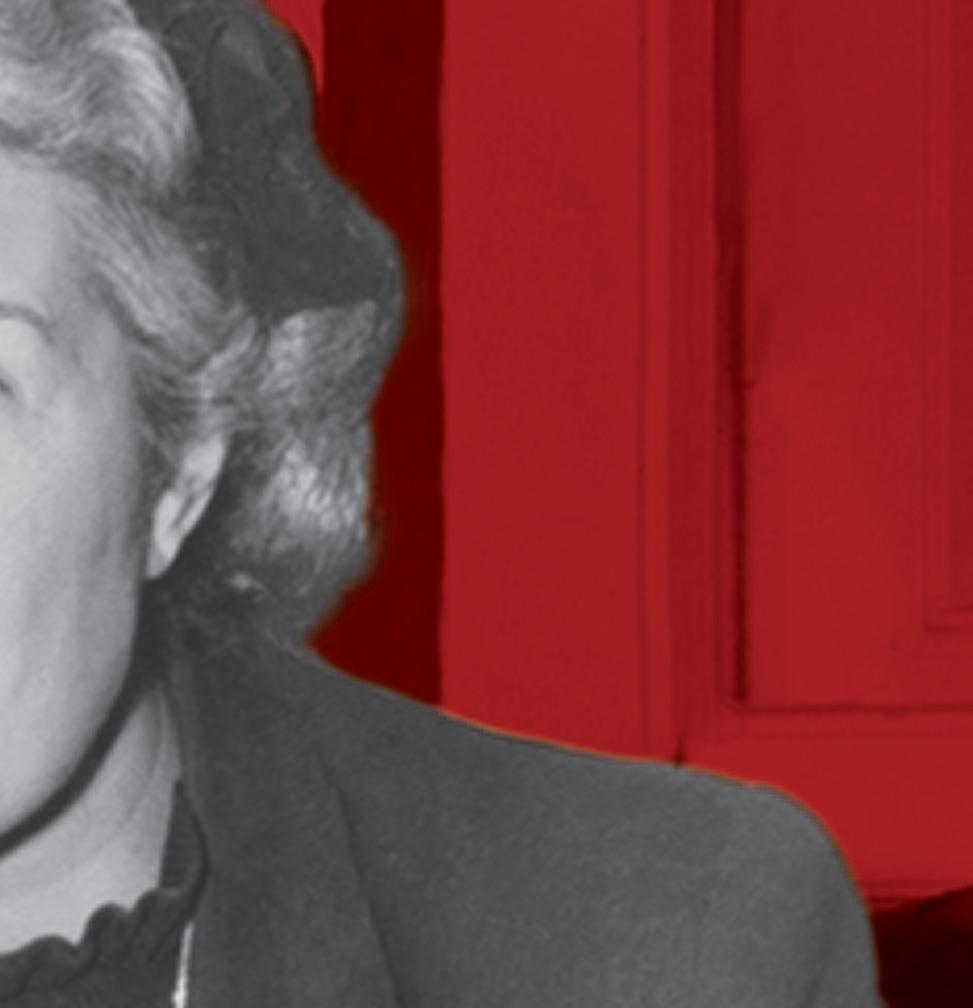

Gillars did not steal state secrets or reveal information to the enemy. She performed in a play, Vision of Invasion, on May 11, 1944, in the role of a distraught Ohio mother named Evelyn whose dead soldier son came to her in a dream as he perished in an invasion of Europe. Gillars performed the part in a radio studio in Berlin. Her audience numbered in the hundreds of thousands: members of the American military throughout Europe and North Africa and at sea — as well as radios in American homes in the eastern U.S.

Someone else was listening, too — and recording: the Federal Communications Commission in Maryland. The play was intended to break the morale of the Allied military might that the Germans knew was amassing to cross the English Channel. It was theater as psychological warfare. Mildred Gillars was born in Maine in 1900 and came of age in Ohio, the stepdaughter of an alcoholic dentist who once practiced in Bellevue. Home life was tumultuous.
She graduated high school in 1917 at Conneaut, near the extreme northeastern corner of the state, and attended Ohio Wesleyan University, where she majored in dramatic arts. Gillars, who went by the nickname “Milly,” took roles in plays and earned a reputation as an excellent orator, eccentric, and a bit of a coquette.
Her impetuous nature came into bloom her senior year, when she left Delaware before graduating college to





























pursue acting in New York City. She landed gigs in stock companies and played traveling vaudeville shows, and worked as a sculptor’s model on the side. But her acting career went flat and she headed to Europe in 1928, with stops in France and Algeria before she landed in Germany in 1934. She taught English at Berlitz School and wrote theater and movie reviews for Variety and the New York Times. Then, in 1940, she took a job with German state radio as “Midge at the Mike.”
The former Buckeye with a silky voice trained in drama was a perfect fit to amplify the Nazi propaganda to American listeners without a heavy German accent. Gillars’ work behind the microphone disparaging FDR, Jews, and the Allies would earn several nicknames: Berlin Betty, Berlin Bitch, Olga, and Axis Sally. The last stuck.
Gillars co-produced two regular radio shows, intended to taunt American servicemen and rattle Americans back home. She visited POW camps and hospitals and interviewed the captives, falsely representing herself as being with the International Red Cross. In GI Letterbox and Medical Reports , Gillars distorted and aired the interviews to make it appear as though the captives were treated well and sympathized with the Nazis. She broadcast names and serial numbers of men killed in combat. Several former POWs would show up at her eventual trial and confirm her seditious and licentious character.
Her daily show Home Sweet Home Hour opened with the sound of a lonesome train whistling in the distance. In a girl-to-girl tone, Gillars would lead off with, “This is Berlin calling the American mothers, wives, and sweethearts. And I would just like to say, girls, when Berlin calls it pays to listen.” To sow seeds of doubt and play on homesickness, Gillars taunted the servicemen in a sultry voice about their unfaithful wives and girlfriends cavorting with boys in convertibles. In between the taunts, she spun big-band records — Glen Miller, Benny Goodman — and brought in live orchestras.
Gillars stayed at it until two days before Germany surrendered in May 1945. She purposely melded into anonymity in a ravaged Berlin, knowing American authorities were after her. Upon her arrest, she was held in a prison camp at Frankfurt until turned over to the FBI in January 1949. A criminal complaint read, “From Dec. 11, 1941, through May 6, 1945, from the German Reich she did unlawfully, willfully and treasonably adhere to the government of the German Reich, an enemy of the United States, and did give to the said enemy aid and comfort.”
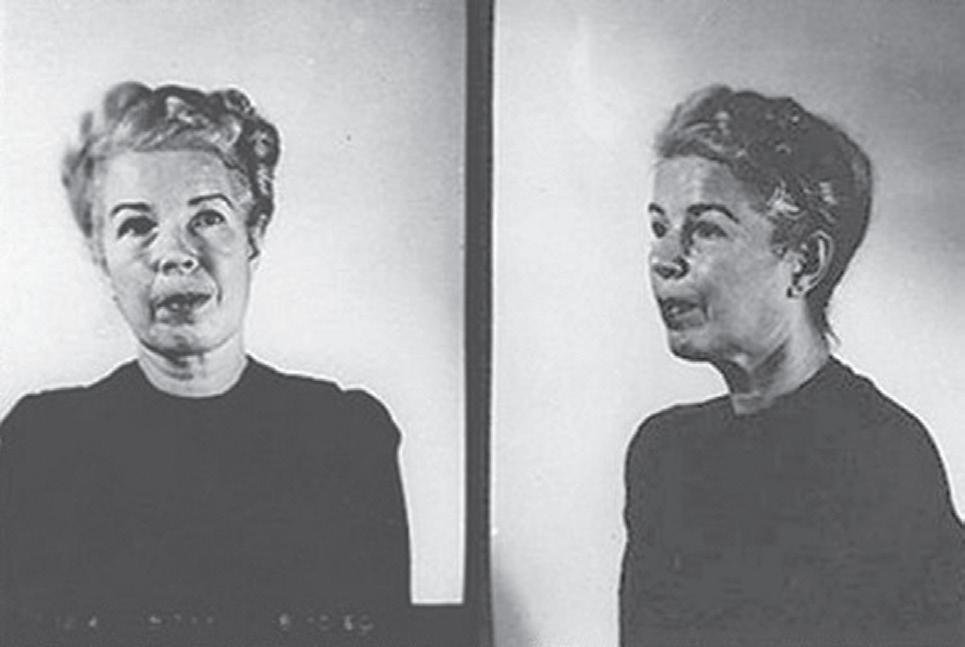
She was charged with eight counts of treason. Her trial in Washington, D.C., lasted 102 days and included hours of listening to her broadcasts as well as testimony from former POWs. On March 11, 1949, 74 years ago last month, she was acquitted on seven of those counts, but convicted of the last one: performing in Vision of Invasion
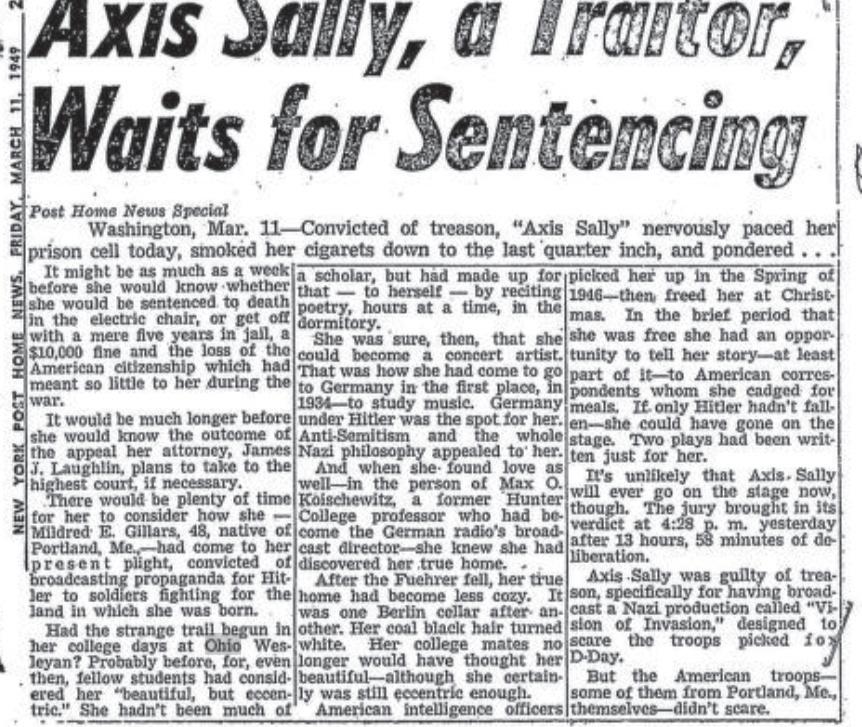
Gillars’ defense that she swore allegiance to Hitler under duress and that she was merely a paid performer and not a party propagandist did not hold up. She did, however, escape the electric chair and instead was sentenced to 10 to 30 years as a “tier-2 traitor.”
While in prison she converted to Catholicism, and upon her parole in 1961, she came to Columbus and landed paid work as a teacher at Our Lady of Bethlehem convent and its attendant grade school. She eventually returned to Ohio Wesleyan and earned her college degree in speech after a 51-year hiatus.
Noted biographer Richard Lucas wrote that she may have outlived her troubled and seditious past. Mildred Gillars died of cancer — destitute and without heirs — in 1988, and at her passing, her friends and associates were stunned to learn through local and national media coverage that the elderly lady they had known as “Miss Mildred” was the reviled Axis Sally. She lies at rest in an unmarked grave in St. Joseph Cemetery, south of Columbus.
To check out the complete FBI file on Mildred Gillars, go to https://archive.org/details/ MildredGillars/page/n643/mode/2up?q=ohio.
In April of 2020, we were just beginning to wrap our heads around the notion that the coronavirus pandemic would not simply disappear after the weather turned warm. We began to accept that, for a while at least, our days would mostly be spent within the walls of our home and the boundaries of our neighborhoods. Schools were shuttered, office workers were learning to Zoom, and spring travel plans shifted to staycations.













Suddenly, everyone was developing a hobby: baking sourdough bread, knitting sweaters, learning to speak French, or playing the piano. Animal shelters were overrun with requests for dogs.
My family dug a hole in the ground and let it fill with water.
If that seems like a modest aspiration, understand that I’ve coveted a rain garden for many years. Designed to temporarily capture and slow the flow of water off your property, rain gardens are a practical and beautiful















landscape feature that is becoming popular, especially for those looking to lighten their footprint on the Earth.


It’s a given that in a rainy environment like Ohio’s, we can’t let water simply pool wherever it wants. Because most of our homes have subterranean foundations, we need to keep rainwater away from the house if we want to keep our basements dry and protect our foundations. So, in keeping with building codes, homebuilders install drainage tile and sump pumps to keep the water routed toward a stormwater collection system, which could be a storm sewer in an urban area or a drainage ditch out in the country.
This approach works (usually), but the long-term effects of our collective rush to drain can be hard on rivers and creeks and the aquatic critters that live therein. Storm water management systems can cause rivers to be “flashy” — meaning the water rises and falls quickly, scouring that river-bottom habitat, causing erosion, and leading to flooding downstream. Storm drainage

The suddenly trendy landscape feature is more than just a decorative hole in the ground.
systems also carry sediment and trash from city streets, grease and oil from cars, and fertilizers and pesticides from yards and fields.
Rain gardens are shallow depressions in the ground that collect rainwater and allow it to slowly percolate into the soil instead of rushing off into the street. These features filter stormwater and prevent flooding as well as providing habitat for birds and butterflies and natural beauty that lasts throughout the year.

After a consultation with our local soil and water conservation district, we staked out a section of yard on the side of the house near two downspouts and began to dig. This led to plenty of curious questions from passing neighbors out walking (6 feet apart at the time, of course). Spurious speculation about our efforts included a small swimming pool, a large bird bath, even one suggestion of a hole to bury a body. We smiled grimly at their jokes and kept digging, by hand, until one more-helpful neighbor let us know that Home Depot rents excavating equipment and offered his truck to help fetch an earth-mover.
This was a game-changer, and in one day we had the rough outlines of the garden in place. After several bags of soil amendments and placement of carefully selected plantings, we routed the water from the downspouts into the rain garden.

Early on, I’ll admit, it looked like a muddy hole in the ground with a few scrawny shrubs. But later in the season, and especially by the next season, we were delighted by how lovely it looked, with wetland vegetation like buttonbush and queen of the prairie jostling for sunlight with black-eyed Susans and swamp milkweed.
There are many resources available to help homeowners plan, build, and maintain a rain garden. The Central Ohio Rain Garden Initiative has a complete building guide and a list of suitable native plants. The Toledo-Lucas County Rain Garden Initiative also has a step-by-step guide. But first check in with your local soil and water conservation district, as some offer classes and advice. Because rain gardens help relieve stress on municipal storm drainage systems, some communities even have cost-share programs that reimburse homeowners for plants, mulch, compost, and other rain garden materials.



A final thought: We surrounded our garden with solarpowered lights, both to add nocturnal beauty and to keep our guests from toppling into the garden while leaving one of our backyard parties. It’s kind of hard to miss, with its shrubbery and tall grasses, but your family and friends will thank you.

• Consider the size but be flexible. There’s a formula for measuring how large your rain garden needs to be, based on the size of your roof and other factors. We didn’t have quite enough room, but our smaller rain garden captures the water from most rain events. In serious downpours, the garden overflows into a swale and into the storm sewer. If you want, you can add a downstream drain and route the overflow directly into the storm sewer.
• Be realistic about what you can do by hand. In my neighborhood, at least, it doesn’t take long to get past the topsoil and into clay, which doesn’t come up easily. The rented excavator cost a bit but was worth every cent.

• Follow the directions to test the drainage. Dig a hole, fill it with water, and see how much it drains in 24 hours. That’s how deep you want your rain garden to be, and that’s important because the water needs to disappear within 24 hours of the rain event. Otherwise, you’re making a place for mosquitos to breed, and nobody wants that.
• Accept that your neighbors may look at you strangely at first, but will be impressed when the plants begin to grow and blossom.

A few things to keep in mind









You can’t always lie down in bed and sleep. Heartburn, cardiac problems, hip or back aches – and dozens of other ailments and worries. Those are the nights you’d give anything for a comfortable chair to sleep in: one that reclines to exactly the right degree, raises your feet and legs just where you want them, supports your head and shoulders properly, and operates at the touch of a button.


Our Perfect Sleep Chair® does all that and more. More than a chair or recliner, it’s designed to provide total comfort. Choose your preferred heat and massage settings, for hours of soothing relaxation. Reading or watching TV? Our chair’s recline technology allows you to pause the chair in an infinite number of settings. And best of all, it features a powerful lift mechanism that tilts the entire chair forward, making it easy to stand. You’ll love the other benefits, too. It helps with correct spinal alignment and promotes back pressure relief, to prevent back and muscle pain. The overstuffed, oversized biscuit style back and unique seat design will cradle you





OVER 100,000 SOLD
OVER 100,000 SOLD








in comfort. Generously filled, wide armrests provide enhanced arm support when sitting or reclining. It even has a battery backup in case of a power outage.













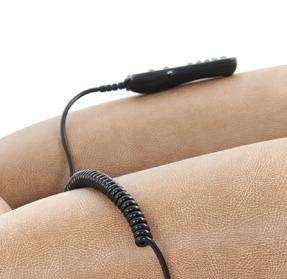
White glove delivery included in shipping charge. Professionals will deliver the chair to the exact spot in your home where you want it, unpack it, inspect it, test it, position it, and even carry the packaging away! You get your choice of Luxurious and Lasting Miralux, Genuine Leather, stain and liquid repellent Duralux with the classic leather look, or plush MicroLux microfiber, all handcrafted in a variety of colors to fit any decor. Call now!



1-888-731-3911


“To you, it’s the perfect lift chair. To me, it’s the best sleep chair I’ve ever had.”
— J. Fitzgerald, VA
3CHAIRS IN ONE: SLEEP/RECLINE/LIFT
The Rutherford B. Hayes Library and Museums continue a longstanding tradition the Ohioan brought to the White House.
 The Easter Egg Roll at the Hayes Library and Museums is a tradition brought back to Ohio when the 19th president returned to his Fremont home after his term in office.
The Easter Egg Roll at the Hayes Library and Museums is a tradition brought back to Ohio when the 19th president returned to his Fremont home after his term in office.
For more than 25 years, children have been bringing colored Easter eggs to the Rutherford B. Hayes Presidential Library and Museums (HPLM) in Fremont. Why? To play old-fashioned games in which they use wooden spoons to roll or carry their hardboiled eggs across the front lawn of the Hayes Home, the 31-room Victorian mansion where the 19th U.S. president and his wife, Lucy, lived after leaving the White House in 1881.
The 2023 Hayes Easter Egg Roll starts at noon on April 8, the Saturday before Easter, and HPLM’s special events
coordinator, Joan Eckermann, is expecting hundreds of youngsters and their family members. “People seem to love the Easter Egg Roll,” says Eckermann. “It’s such fun to see the children’s reaction when the Easter Bunny arrives.” Egg games were popular during the late 1800s, and in Washington, D.C., residents especially enjoyed spending Easter Monday on the grounds of the U.S. Capitol, where they picnicked and watched children rolling eggs — and often themselves — through the grass. After some rambunctious egg rollers damaged the landscaping

in 1876, members of Congress promptly protected their turf by passing a law prohibiting people from using the Capitol grounds for a playground. Because it rained in 1877, the law wasn’t enforced until 1878, when police expelled youths carrying colored eggs from Capitol Hill. President Hayes saved the day for the disappointed children by letting them roll eggs on the White House’s South Lawn.

Hayes certainly had no way of knowing it on that April 22, 1878, but he started one of the executive mansion’s oldest and most beloved traditions: the White House Easter Egg Roll. Except for a few years when the nation was at war, the weather was inclement, or COVID was feared, presidents have hosted Easter Monday fun and games at the White House ever since. Indeed, the event quickly mushroomed, and in 1916, when the Easter Egg Roll resumed after a World War I hiatus, another president from Ohio — Warren G. Harding — welcomed more than 50,000 children. First Lady Florence Harding and “First Dog” Laddie Boy also joined the festivities, which included an appearance by costumed actors from the play Alice and the White Rabbit
The Hayes Museums' Easter Egg Roll mimics the South Lawn’s rituals by featuring 1800s games, a scavenger hunt, and story reading. Obviously, if President Hayes weren’t the White House event’s founding father, kids today probably would not forsake screens and smartphones to roll eggs at HPLM. Perhaps Hayes had a soft-hearted response to Congress’s hardboiled law because he and Lucy raised five children. Or maybe Hayes let the good times roll on the South Lawn simply because egg games were the Gilded Age equivalent of cornhole. Open to children ages 3 to 10, the 2023 Hayes Easter Egg Roll takes place on April 8. Participants should bring three hardboiled, colored eggs to use in the games. There is no charge for the event or visiting Spiegel Grove’s grounds, but the Hayes Home and Hayes Museum have admission fees. For more information, call 419-332-2081 or visit www.rbhayes.org.










In the 1860s, Sardis Birchard, a Fremont businessman who was Hayes’s uncle and boyhood guardian, constructed the original part of the Hayes Home on a 25acre estate that he called Spiegel Grove. After Birchard died in 1874, Hayes inherited Spiegel Grove and began making improvements and additions that transformed the house into a manse whose features – including a rooftop lantern and stunning staircase — exemplify Victorian architecture. Hayes was especially partial to its splendid wraparound veranda.

Following Hayes’s death in 1893, one of his sons, Col. Webb Cook Hayes, honored his legacy by creating a library and museum at Spiegel Grove in cooperation with the State of Ohio and what is now the Ohio History Connection. Opened in 1916, the library-museum building pioneered the presidential library concept. Col. Hayes and other family members lived in the Hayes Home until 1965, and it subsequently became a house museum and HPLM’s flagship attraction.
As presidential destinations go, HPLM is exceptional because it contains a chief executive’s home, library, museum, and grave. museum,








 One of the most popular events at the Hayes Library's Easter Egg Roll is the arrival of the Easter Bunny.
One of the most popular events at the Hayes Library's Easter Egg Roll is the arrival of the Easter Bunny.
Now you can finally have all of the soothing benefits of a relaxing warm bath, or enjoy a convenient refreshing shower while seated or standing with Safe Step Walk-In Tub’s FREE Shower Package!
✓ First walk-in tub available with a customizable shower
✓ Fixed rainfall shower head is adjustable for your height and pivots to offer a seated shower option




✓ High-quality tub complete with a comprehensive lifetime warranty on the entire tub
✓ Top-of-the-line installation and service, all included at one low, affordable price























Now you can have the best of both worlds–there isn’t a better, more aff ordable walk-in tub!




















handicapped accessible. 250 to 400 dealers per show. Food available for purchase. 419-447-9613 or www. tiffinfleamarket.com.
APR. 29–SEP. 10 – NWORRP Museum Summer Hours, Northwest Ohio Railroad Preservation Inc., 12505 Co. Rd. 99, Findlay, Sat./Sun. 1–4 p.m. $3; 12 and under, $2 Museum tours, quarter-scale train rides, model train displays, games, play area, and more. 419-423-2995, www.nworrp.org, or www.facebook.com/nworrp.
MAY 3 – Down on the Farm Story Time, Proving Ground Farm, 5670 E. Twp. Rd. 138, Tiffin, 10 a.m. Stories and activities are geared for preschoolage children and focus on farming and nature in a picturesque outdoor setting. Families welcome! 419447-7073, www.conservesenecacounty.com, or follow Seneca Conservation District on Facebook.
APR. 16–MAY 28 – Chunky Knit Blanket Workshop, Vandermark Estate and Events Venue, 9095 Spencerville Rd., Spencerville, 2–5 p.m. $40. Learn step by step how to hand knit a beautiful and cozy chunky chenille blanket. www.thevandemarkestate.com/book-online.
APR. 23 – Glass City Marathon, Toledo. One of the fastest marathons in the U.S. Events include 26 2-mile marathon, 13 1-mile half marathon, and five-person relay, 5K and kids run on Apr. 22. www.glasscitymarathon.org.
APR. 29 – Chocolate and Wine Walk, downtown Vermilion, noon–4 p.m., rain or shine! $25. Take a stroll through the town while sampling chocolate treats and/or wine as you visit the participating shops. 440-967-4477 or www.vermilionohio.com.
APR. 29 – Toledo Doll, Bear, and Toy Show, Total Sports Rossford, 10020 S. Compass Dr., Rossford, 9:30 a.m.–3:30 p.m. ($8, free for 12 and under); early bird, 8–9:30 a.m. ($20). Antique, vintage, artist, and modern dolls and bears/ critters, related items, accessories, and more. Door prizes, ID/valuation, and restringing. www.toledodollshow.com.
APR. 29–30 – The Fantastic Tiffin Flea Market, Seneca Co. Fgds., 100 Hopewell Ave., Tiffin, Sat. 9 a.m.–4 p.m., Sun. 9 a.m.–3 p.m., rain or shine. Free;
MAY 5 – Star Gazing at Schoonover Observatory, 670 N. Jefferson, Lima, 9 p.m. Free. Come see the stars with us! If you have a telescope, bring it along; Lima Astronomical Society members will show you how to use it and will answer any questions. Weather permitting. https:// limaastro.com.
MAY 5–6 – Spring Fest, Van Wert Co. Fgds., 1055 S. Washington St., Van Wert, Fri. 4–7 p.m., Sat. 10 a.m.–7 p.m. Plant sale, landscaping equipment sale, car show, food and craft vendors, entertainment, and more. 419-238-9270 or www.vanwertcountyfair.com.
MAY 5–AUG. 4 – Limaland Motorsports Park Races, 1500 Dutch Hollow Rd., Lima, 7:30–10:30 p.m. Sprints, UMP Modifieds, Thunderstocks, and more! Pit gates open at 4:30 p.m., grandstand gates at 5 p.m., warmup laps begin at 6:30 p.m. See website for updated information. www.limaland.com.
MAY 6 – Free Comic Book Day, Alter Ego Comics, 10 a.m.–4 p.m. Readers of all ages can choose a free comic book from a selection of different titles. There will be characters in costume, and we encourage you to come dressed as your favorite character! 419-224-6700 or www. facebook.com/AlterEgoManiacs.
Chillicothe, Tues.–Sun. Exhibition includes artwork from over 40 regional artists working in a variety of media. Displayed artwork will be available for purchase. www.thepumphouse.art.
APR. 15 – Earth Gathering Festival, Pump House Center for the Arts, 1 Enderlin Circle, Chillicothe, 11 a.m.–6 p.m. Features around 40 vendors offering Earth-friendly art and products along with several musical acts throughout the day. www.thepumphouse.art.
APR. 15 – Archaeology Day, Lucy Hayes Heritage Center, 90 W. Sixth St., Chillicothe, 1–4 p.m. Archaeologist Jeb Bowen coordinates the event, as children learn for 10 minutes at five stations that include metal detecting and historical artifacts. Gary Argabright will present ancient technologies. 740-775-5829 or find us on Facebook.
MAY 6–7 – “Springtime in Ohio” Craft Show, Hancock Co. Fgds., 1017 E. Sandusky St., Findlay, Sat. 10 a.m.–5 p.m., Sun. 11 a.m.–4 p.m. $6. Early-bird hours Sat. 8 a.m.–10 p.m.; must purchase tickets online. www. visitfindlay.com/events.
MAY 6–7 – Tri-State Gun Show, Allen Co. Fgds., 2750 Harding Hwy., Lima (2 miles east of Lima on St. Rte. 309), Sat. 8:30 a.m.–4 p.m., Sun. 8:30 a.m.–3 p.m. $6, free for members, under 18 free. Over 400 tables of modern and antique guns, edged weapons, and sportsman’s equipment. 419-647-0067 or www.tristategunshow.org.
MAY 3–6 – Annual Quilt Show, Founder’s Hall, Sauder Village, 22611 St. Rte. 2, Archbold, Wed.–Sat. 10 a.m.–5 p.m. $11–$15. Hundreds of quilts on display, quilt shop and vendor market, special exhibits, demos, and workshops. Quilt appraisals available. 800-590-9755 or https:// saudervillage.org.
MAY 5–14 – Biggest Week in American Birding, various locations in Oak Harbor and Oregon. $10–$75. Field trips, presentations, workshops, and special events. 419-8984070 or www.biggestweekinamericanbirding.com.
MAY 12–21 – Four Weddings and an Elvis, Encore Theatre, 991 N. Shore Dr., Lima, Fri./Sat. 8 p.m., Sun. 2 p.m. A romantic comedy set in a Las Vegas wedding chapel that hosts four of the most memorable ceremonies you will ever see. 419-223-8866 or www.amiltellers.org.
MAY 13 – Lilac Festival and Street Fair, Clinton Street, Defiance, 10 a.m.–4 p.m. Free. Celebrate the official flower of Defiance with the community’s largest arts and crafts fair. Includes food vendors, 5K race, and kids’ activities. Free lilacs to the first 750 attendees. 419-782-0739 or https://visitdefianceohio.com/annual-events.
MAY 13 – Findlay Craft Beer Fest and Wine Tasting, Northwest Ohio Railroad Preservation Inc., 12505 Co. Rd. 99, Findlay, 5–9 p.m.; VIP admission at 4 p.m. For age 21 and older only. Sample offerings from several local craft breweries and a local winery. Includes refreshments and entertainment. 419-423-2995, www.nworrp.org, or www. facebook.com/nworrp.
MAY 5 – The Farm Hands, Pennyroyal Opera House, off I-70 at exit 198, Fairview, 7 p.m. $15 (cash only); 12 and under free. Doors and kitchen open at 5 p.m. 740-8270957 or www.facebook.com/PennyroyalBluegrassOhio.
MAY 6 – The Big Deal at Great Seal, Great Seal State Park, 4908 Marietta Rd., Chillicothe, 7 a.m. $39–$99 Register by Apr. 6. The course is a 25K loop with roughly 2,800 feet of elevation gain of southern Ohio Appalachian foothills. Choose your distance: 50K, 25K, or 5K. www. facebook.com/runfluent.
THROUGH DECEMBER – Athens Farmers Market, Athens Community Center, 701 E. State St., Athens, Sat. 9 a.m.–noon; Apr. 20–Nov. 23, Wed./Sat. 9 a.m.–noon. Voted Ohio’s #1 favorite farmers market! 740-593-6763 or www.athensfarmersmarket.org.
APR. 5 – 2023 Season Opening Day, Adena Mansion and Gardens, 847 Adena Rd., Chillicothe, Wed.–Sat. 9 a.m.–5 p.m., Sun. noon– 5 p.m. $6–$12. The historic estate of Thomas Worthington reopens for the season with tours of the beautifully restored mansion, gardens, museum, and outbuildings. www.adenamansion.com.
APR. 6–29 – Chillicothe Art League Spring Open, Pump House Center for the Arts, 1 Enderlin Circle,

APR. 22–23 – Lucasville Trade Days, Scioto Co. Fgds., 1193 Fairground Rd., Lucasville, Sat. 7 a.m.–7 p.m., Sun. 7 a.m.–4 p.m. $7; 12 and under free. 937-728-6643 or www. lucasvilletradedays.com.
APR. 28 – Joe Mullins and the Radio Ramblers, Pennyroyal Opera House, off I-70 at exit 198, Fairview, 7 p.m. $15 (cash only); 12 and under free. Doors and kitchen open at 5 p.m. 740-827-0957 or www.facebook.com/ PennyroyalBluegrassOhio.
MAY 4–7 – Vinton County Wild Turkey Festival, East Main Street, McArthur. Amusement rides, car show, bike show, live music, grand parade, and more. https://vcwtf.org or www.facebook.com/wildturkeyfestival.
MAY 6 – Kentucky Derby Party, Chillicothe Country Club, 800 Arch St., Chillicothe, 4:30–9 p.m. (approx.). $60/ person. Enjoy dinner, games, and auctions and support the Hope Clinic of Ross County. Tickets can also be purchased at Julie’s on Paint or Eventbrite.com. For more information, contact Nancy Jones at 740-253-2779 or nancy.jones@ hopeclinicgres.org.
MAY 6 – Spring Fling Market and Craft Show, Mt. Logan Learning Center Gymnasium, 841 E. Main St., Chillicothe, 9 a.m.–2 p.m. Local vendors, shops, and lunch. 740-7732638 or find Mt. Logan Elementary School on Facebook.
MAY 6–28 – Heirloom Plant Sale, Adena Mansion and Gardens, 847 Adena Rd., Chillicothe, Wed.–Sat. 9 a.m.–5 p.m., Sun. 12 p.m.–5 p.m. Featuring heirloom varieties of flowers and vegetables. These varieties were passed on before the advent of industrial farming, with many going back to the 19th century. www.adenamansion.com.

Farm.” 740-792-4426 or www.thehealingland.com.
APR. 21–22 – Earlier Times Antiques and Folk Art Show, Harvest Ridge, Holmes Co. Fgds., 8880 St. Rte. 39, Millersburg, Fri. 4–7 p.m., Sat. 10:30 a.m.–3 p.m. For information, contact Cheryl Williams at 614-989-5811
APR. 27–30 – Geauga County Maple Festival, Historic Chardon Square, Chardon, Thur. noon–10 p.m., Fri./Sat. 10 a.m.–11 p.m., Sun. 11 a.m.–7 p.m. Maple syrup and candy contest, all-you-can-eat pancakes, arts and crafts, lumberjack competition, baking contest, pageants, and much more. 440-332-7055 or www.maplefestival.com.
APR. 30 – Canton-Akron Comic, Toy, and Nostalgia Convention, St. George Event Center, 4667 Applegrove St. NW, North Canton, 10 a.m.–4 p.m. $5; age 6 and under free. Comic and toy vendors, guest comic creators, hourly prizes. 330-462-3985 or www.harpercomics.com.
MAY 4 – National Day of Prayer Event, LaGrange Community Park, 422 W. Main St., LaGrange, noon. All are welcome. Please bring a lawn chair. For further information, contact LaGrange United Methodist Church at 440-355-4561
THROUGH APR. 23 – The Great Steubenville Eggsibition, downtown Steubenville, 10 a.m.–4 p.m. Three-foot-tall Easter eggs are strategically placed in downtown businesses for an all-city, all-ages Easter egg hunt! The 35 giant eggs were designed and painted by more than 20 different local artists. 740-632-8909 or www.steubenvillenutcrackervillage.com/eggsibition.
APR. 8 – Freeport VFD Spring Craft Show, 119 E. Main St., Freeport, 9 a.m.–2 p.m. Contact Linda Fritter at 740-213-9197 to reserve a table or donate food for the eat stand. https://facebook.com/events/s/craftshow/726115969179580
APR. 10–22 – Annual Spring Quilt Show, Historic Fort Steuben, 120 S. 3rd St., Steubenville, Mon.–Fri. 10 a.m.–4 p.m., Sat. noon–4 p.m., or by appointment. Free. Over two dozen handcrafted quilts on display. 740-283-1787 or www.oldfortsteuben.com.
APR. 15–16 – Antlers & Anglers Sportsman’s Showcase, Ashland Co. Fgds., 2042 Claremont Ave., Ashland, Sat. 10 a.m.–4 p.m., Sun. 11 a.m.–4 p.m. Celebrate the great outdoors! Seminars, demos, food vendors, prizes, and giveaways. www.armstrongonewire. com or www.facebook.com/followarmstrong/events.
APR. 15, 22, 29, MAY 6 – LCBA Memorial Garden Hands-On, Life Church, 1033 Elm St., Grafton, 10 a.m. Students will work with an experienced beekeeper to learn how to inspect the hive to determine the health and productivity of the bee colony. www. loraincountybeekeepers.org.
APR. 19 – Lecture Series: “Building an Independent Farmstead,” Leonardo’s Coffeehouse, 159 N. 4th St., Steubenville, 7–9 p.m. Free. Authors Shawn and Beth Dougherty will speak on “Feeding the Family from the
APR. 28–29 – Annual International Watch Fob Association Show and Sale, Lakeside Sand and Gravel, 3498 Frost Rd., Mantua, Fri. 9 a.m.–8 p.m., Sat. 9 a.m.–5 p.m. Free. World’s largest watch fob, construction memorabilia, scale model, and toy show. Combined with Lakeside Sand and Gravel Antique Equipment Show and Open House. See construction equipment as old as 1910 and take gravel pit tours. 50/50 raffles both days. Free food and refreshment. www.watchfob.com or www. facebook.com/IWFAI.
APR. 28–30 – Mohican Wildlife Weekend, various locations in Ashland and Richland counties. Free. Explore the Greater Mohican area by land and water. 800-6428282 or www.mohicanwildlifeweekend.com.
APR. 28–30, MAY 5–7 – Bag Lady Tour, various locations in Lorain, Ashland, Medina, and Huron counties, Fri./Sat. 10 a.m.–5 p.m., Sun. 12–5 p.m. A fun-filled driveyourself shopping tour. Pick up a map of participating businesses at first stop or download from website. 440371-7589 (Sue) or www.countrytourgroup.com.
APR. 29 – Great Outdoorsman Show, Hartville Marketplace and Flea Market, 1289 Edison St. NW, Hartville, 9 a.m.–4 p.m. Features hunting, firearms, ammunition, and fishing vendors along with camping and outdoor gear exhibitors. Get tip and tricks from industry experts as well. 330-877-9860 or www. hartvillemarketplace.com/events.
APR. 29–30 – Wayne County Home and Garden Show, Wayne Co. Fgds., 199 Vancouver St., Wooster, Sat. 10 a.m.–6 p.m., Sun. 10 a.m.–4 p.m. Free. Features innovative products and services that will transform your home and lawn, plus kids’ activities, food, and plant sale. 330-262-5735 or www.woosterchamber.com/waynecounty-home-garden-show.
APR. 22 – West Virginia Food Truck Festival, Eleanor Park & Fair Grounds, Park Road, Eleanor, 12–5 p.m. Free. Food trucks, artisan vendors and demos, a cornhole tournament, and great live music 304-7577282 or www.wvfoodtruckfestival.com.
APR. 29 – Ramps and Rails Festival, Elkins Depot, 315 Railroad Ave., Elkins, 10 a.m.–4 p.m. Ramp-themed foods, live music, and craft vendors. Train rides available. 304-365-7803 or www.elkinsdepot.com/ events/ramps-and-rail-festival.
MAY 13–21 – West Virginia Strawberry Festival, downtown Buckhannon. Food vendors specializing in strawberry treats of all kinds, arts and crafts show, horse and carriage parade, carnival, exhibits, and much more! 304-472-9036 or www.wvstrawberryfestival.com.
MAY 5 – First Fridays on Fourth, 155 N. 4th St., Steubenville, 6–10 p.m. Free. Art, crafts, games, food trucks, live entertainment, and activities to stimulate the imagination. www.theharmoniumproject.org/first-Fridays.
MAY 5–6 – Dandelion May Fest, Breitenbach Vineyards, 5773 Old Rte. 39 NW, Dover, Fri. noon–7 p.m., Sat. 9 a.m.–7 p.m. Dandelion wine tastings, sangria, and food, plus cellar tours, arts and crafts, vendors, and live entertainment. 330-343-3603 or www.breitenbachwine. com/events/dandelion-festival.

MAY 6–7 – Ohio Civil War Show, Richland Co. Fgds., 750 N Home Rd., Mansfield, Sat. 9 a.m.–5 p.m., Sun. 9 a.m.–3 p.m. $7, under 12 free. Artillery show, cannon firing demos, Civil War hospital scenario and battleground encampments, WWII small arms demos, and much more. 419-884-2194 or www.ohiocivilwarshow.com.
MAY 7 – The Baker’s Basement: “The Anatomy of a Concert,” Wadsworth Public Library, 132 Broad St., Wadsworth, 2–3 p.m. Free, but reservations recommended. Register at www.ormaco.org or by calling 419-853-6016
MAY 12–13 – Annual Spring Festival and Auction, 8001 Township Rd. 574, Holmesville. Proceeds benefit children and adults in Holmes County DD facilities. Furniture and quilt auction, bake sale, drawing prizes, children’s games, volleyball, and food; entertainment Fri. evening; breakfast Sat. morning; chicken barbeque Sat. 11:30 a.m. 330-674-8045 or www.holmesdd.org.
MAY 13 – Plant Discovery Day, Secrest Arboretum, 1680 Madison Ave., Wooster, 9 a.m.–1 p.m. Free. Annual sale featuring new and unique annuals, perennials, herbs, and woody plants. See website for plant list. https:// friendsofsecrest.com/plant-discovery-day.
Submit listings AT LEAST 90 DAYS prior to the event to Ohio Cooperative Living, 6677 Busch Blvd., Columbus, OH 43229 or send an email to events@ohioec.org. Ohio Cooperative Living will not publish listings that don’t include a complete address or a number/website for more information.
APR. 1–30 – “Best of Pickaway County” Art Contest, ArtsAround Gallery, 135 W. Main St., Circleville. Art from Pickaway County high school students will be on display throughout the month, with prizes being awarded at the end of April. For more information, contact Steve Sawyer at Ssawyer43113@gmail.com.
APR. 15 – Adult Flashlight Easter Egg Hunt, Union Co. Fgds., 845 N. Main St., Marysville, 8:30 p.m. $25 Hunt for thousands of filled Easter eggs by flashlight! Afterparty includes food, adult beverages (must be 21+), raffles, contests, and entertainment. Proceeds benefits the Hope Center. www.eventbrite.com/o/the-courtrightgroup-32590899443
APR. 15 – Quilters Market Day: “A Flea Market for Quilters,” Fredericktown Schools, 111 Stadium Dr., Fredericktown, 10 a.m.–3 p.m. $5. Buy and sell quilting tools, books, patterns, fat quarters, quilted items. Fat quarter drawing, quilt show, quilting demos. Lunch available for purchase. 740-485-1281 (Patty) or https:// fredericktown.org/qmd.
APR. 15, MAY 6 – Chihuly Night, Franklin Park Conservatory, 1777 E. Broad St., Columbus, 7–10 p.m. $15–$25. All 18 Chihuly installations will be professionally lit up to create breathtaking views. www.fpconservatory. org/events.
APR. 16 – Pickerington PetFest, Victory Park, Lockville Road and Park Alley, Pickerington, 1–4 p.m. Check out all the pet-related vendors at this annual, family-friendly event. Bring your pets; leashes, please. www.pickeringtonvillage.com.
APR. 19–23 – Buckeye Dulcimer Festival, Recreation Unlimited, Ashley. Instruction in playing traditional instruments, including dulcimers, autoharp, clawhammer banjo, and others. Classes, jams, and concerts. 937-295-5253 or www.buckeyedulcimerfestival.com.
APR. 22 – Ohioana Book Festival, Columbus Metropolitan Library’s Main Library, 96 S. Grant Ave., Columbus, More than 120 Ohio authors and illustrators will attend. Books available to purchase from the Book Loft. 614-466-3831 or www.ohioana.org/programs/ ohioana-book-festival.
APR. 23 – A Cappella Concert, Boardman Arts Park, 154 W. William St., Delaware, 2–5 p.m. Free. Groups from Ohio Wesleyan and area high schools will serenade you while you enjoy spring at the park. Bring a lawn chair or a blanket. www.boardmanartspark.org.
APR. 23 – Southeastern Ohio Symphony Orchestra Season Finale, Brown Chapel, Muskingum University, College Drive, New Concord, 7 p.m. $15 740-826-8197 or http://seoso.org.
APR. 28–29 – Spring at the Round Barn: Vintage and Made Market, Fairfield Co. Fgds., 157 E. Fair Ave., Lancaster, Fri. 4–8 p.m., Sat. 9 a.m.–4 p.m. $7. Open-air and barn markets showcasing 125+ modern makers, purveyors of authentic vintage finds, boutique clothing, designers, growers, food trucks, and live music. 614-2961621 or https://thevintageandmademarket.com.
APR. 29 – Sunbury Farmers Market Vendors Meet-NGreet, Sunbury Town Hall, 51 E. Cherry St., Sunbury, 9 a.m.–noon. Season sign-up day. Light refreshments will be served. 740-513-9192 or sunburyohiofarmersmarket@ gmail.com.
MAY 5 – Pickerington Chocolate Hop, beginning at
kids’ activities, dog show, 5K run, and more. Pancake breakfasts 8–11 a.m. ($5–$10). Locally sourced, authentic sugar maple syrup available for purchase. www.sugarmaplefestival.com.
APR. 21–23 – Vintage Market Days: “Here Comes the Sun,” Greene Co. Fgds., 120 Fairground Rd., Xenia, Fri./Sat. 10 a.m.–4 p.m., Sun. 10 a.m.–3 p.m. Vintage and vintage-inspired market featuring original art, antiques, clothing, jewelry, home décor, handcrafted items, and more. Food trucks and live music all weekend. 765-576-0042 or https://vintagemarketdays. com/market/dayton-cincinnati.
Columbus and Center streets, Pickerington, 6–8:30 p.m. $5 donation gets you a map of locations around Olde Pickerington Village, where you will receive a little chocolate treat as a thank-you. Limited number of maps; donate in advance. www.pickeringtonvillage.com.
MAY 6 – The Righteous Brothers, Marion Palace Theatre, 276 W. Center St., Marion, 7:30 p.m. $12–$65 740-383-2101 or www.marionpalace.org.
MAY 6–SEP. 30 – Sunbury Farmers Market, Sunbury Town Square, 9 E. Granville St., Sunbury, 9 a.m.–noon. Offering local handmade, homemade, and homegrown products. 740-513-9192 or sunburyohiofarmersmarket@gmail.com.
MAY 6–OCT. 28 – Coshocton County Farmers Market, 22375 Co. Rd. 1A, Coshocton, 8:30 a.m.–noon. Local fresh produce, baked goods, and artisan crafts at our new location by the Walhonding River. market. manager@coshfarmmarket.org or www.facebook.com/ coshoctonfarmersmarket.
MAY 7 – “The Art of Tea,” Ohio Herbal Center, Gahanna, 11 a.m. $25. Learn the subtle nuances of making tea and blending herbs for taste and wellness. Tastings will be provided. You’ll receive a variety of herbs to take home, along with recipes. Registration required; limited class size. 614-642-4372 or www.ohioherbalcenter.org.
MAY 11–13 – Ham and Eggs Music and Comedy Show, Ohio University Lancaster, 1570 Granville Pike, Lancaster, Thur./Fri. 7:30 p.m., Sat. 3 p.m. $10. Join us for our 51st year of music and laughter as we raise money for college scholarships. https://lancastermenschorus.org.
MAY 13–14 – AG Days, Hocking Co. Fgds., 150 N. Homer Ave., Logan, Sat. 9 a.m.–5 p.m., Sun. 9 a.m.–4 p.m. Free. Antique tractor display and ride (19 miles}, sawmill display, steam engines, hit-and-miss engines, old car show, and much more. Lumber sale Sun. 3 p.m. Pancake breakfast Sat./Sun. morning. For more information, contact Betty Shaw at 740-422-8285 or bettylshaw43@ gmail.com.
S. Broad St., Middletown, noon–1 p.m. Free. Bring a lunch to enjoy during the show. 513-423-4629 or www. myfumc.net/first-fridays-concert-series.
MAY 6–7 – GeoFair 2023, Sharonville Convention Center, 11355 Chester Rd., Sharonville, Sat. 10 a.m.–6 p.m., Sun. 11 a.m.–5 p.m. $5–$12. Greater Cincinnati’s annual gem, mineral, fossil, and jewelry show. www.geofair.com.
THROUGH MAY 31 – Bluegrass Wednesdays, Vinoklet Winery, 11069 Colerain Ave., Cincinnati, Wed. 6:30–8:30 p.m. Enjoy dinner, wine, and an evening of free entertainment by Vernon McIntyre’s Appalachian Grass. Reservations recommended. 513-385-9309, vinokletwinery@fuse.net, or www.vinokletwines.com.
APR. 9 – Easter Egg Hunt, Young’s Dairy, 6880 Springfield-Xenia Rd., Yellow Springs, 2 p.m. Free. Open to children up to age 10. We will hard-boil and dye over 10,000 eggs for this fun family event. 937-325-0629 or www.youngsdairy.com/easter-egg-hunt.
APR. 21–22 – Midwest Ceramic Association Show, Butler County Exhibition Bldg., Butler Co. Fgds., 1715 Fairgrove Ave., Hamilton, 10 a.m.–3 p.m. Ohio’s original ceramic show. www.midwestceramics.org.
APR. 21–23 – Bellbrook Sugar Maple Festival, downtown Bellbrook. Food vendors, nightly beer garden, live entertainment, craft vendors, parade,
APR. 21, MAY 19 – Bluegrass Night, Fibonacci Brewing Company, 1445 Compton Rd., Cincinnati, 7–9 p.m. Free. Enjoy lively bluegrass music by Vernon McIntyre’s Appalachian Grass, a wide variety of craft beers at the Beer Garden, and food truck eats. 513-832-1422 or http://fibbrew.com.
APR. 22 – Oxford’s Community EarthFest, Memorial Park, uptown Oxford, 8 a.m.–4 p.m. Free. Games, interactive exhibits, workshops, farmers market, live music, and more. https://enjoyoxford.org/calendar.
APR. 22 – Vernon McIntyre’s Appalachian Grass, Sterling Bluegrass Jamboree, 26 E. Main St., Mt. Sterling, 7 p.m. Enjoy an evening of lively bluegrass music, kicking off at 6 p.m. with the Sterling Bluegrass Band. Home-cooked food, including pies, available on-site. 614-323-6938, sterlingbluegrassjamboree@ gmail.com, or www.sterlingbluegrassjamboree.com/ upcoming-events.
MAY 5 – First Friday Concert: Vernon McIntyre’s Appalachian Grass, First United Methodist Church, 120
MAY 13 – Crafty Supermarket, Cincinnati Music Hall, 1241 Elm St., Cincinnati, 11 a.m.–5 p.m. Free. Indie craft show featuring more than 100 makers from all over Ohio, the Midwest, and beyond. 513-226-0901 or www.craftysupermarket.com.
MAY 13 – Loveland Athletic Boosters Spring Arts and Crafts Show, Loveland Primary School, 550 Loveland Madeira Rd., Loveland. Adults $3. Approximately 100 artists and crafters selling unique handcrafted items. lovelandcraftshow@gmail.com or 513-476-5187
MAY 13 – Vernon McIntyre’s Appalachian Grass, Appalachian Festival, Coney Island, 6201 Kellogg Ave., Cincinnati, 4 and 6 p.m. Enjoy an afternoon of lively bluegrass music featuring lightning-fast instrumentals, close harmonies, and entertaining novelty songs. 513-251-3378 or www.appalachianfestival.org.
MAY 13–14 – Appalachian Festival, Coney Island, 6201 Kellogg Ave., Cincinnati, Sat. 10 a.m.–9 p.m., Sun. 10 a.m.–6 p.m. Rain or shine. $5–$15; under 6 free. Traditional craft demonstrations, dancing, storytelling, Mountain Village living history area, music on three stages, food vendors. 513-251-3378 or www.appalachianfestival.org.
Our granddaughter, Marylynne, having tea with some very special friends. Traci Zeimer, South Central Power Company member


Tea party for my daughter
Leanne’s 5th birthday. Ellen Reed, Guernsey-Muskingum Electric Cooperative member

My daughter Ellie enjoyed a tea party with her Madame Alexander doll. The tea set is a family heirloom, belonging to my mother, Carol Wise. Kira Davis, Midwest Electric member


Send us YOUR picture!
Our daughter, Molly (3), serves up tea and smiles! Ann-Morgan and Justin Krueger, Union Rural Electric Cooperative member
An afternoon tea at Cambridge Tea House in Columbus. Jodi Bird, South Central Power Company member

For July, send “Fair food” by April 15; for August, send “Vintage school days” by May 15.



Upload your photos
photo
Summertime tea party with my granddaughters, Norah (4) and Amelia (2). Joining them is their best friend, our golden retriever, Mattis. Mary Rice, Lorain-Medina Rural Electric Cooperative member


